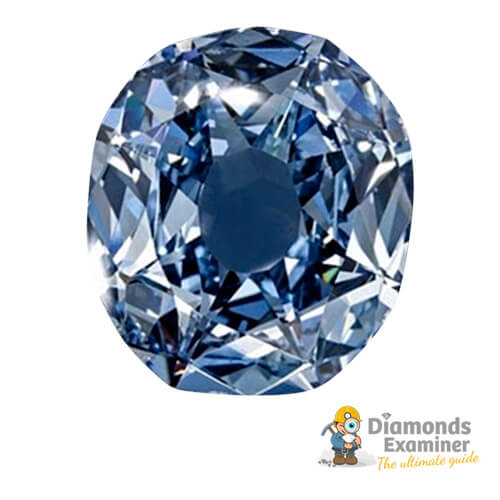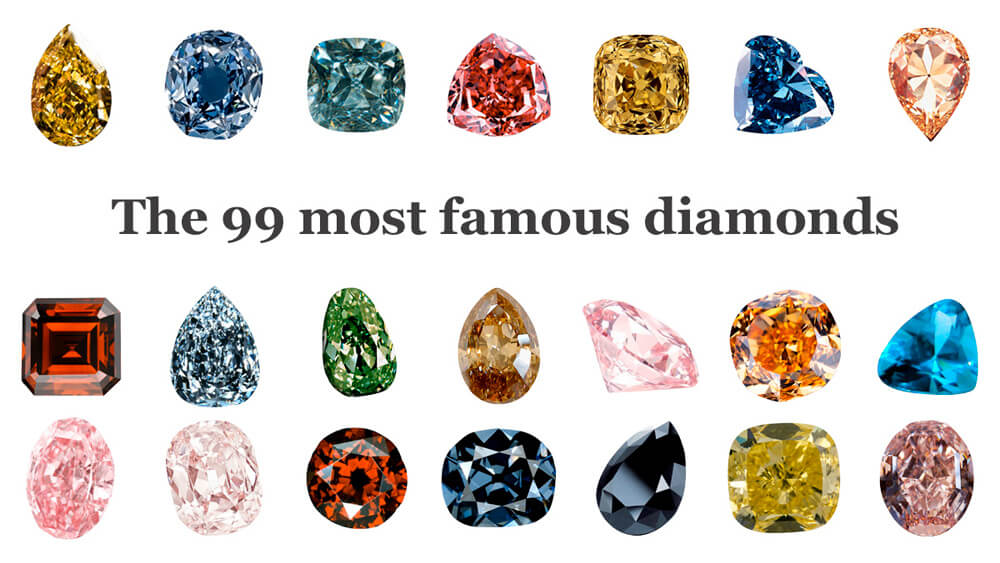Like diamonds?
Enjoy watching and learning about the 99 Most Famous diamonds of the world. Yes, the 99 diamonds below are the most famous and the most expensive diamonds on earth!
If you could pick one them, which one would you take? Tell me in the comments section below.
Take the Quiz
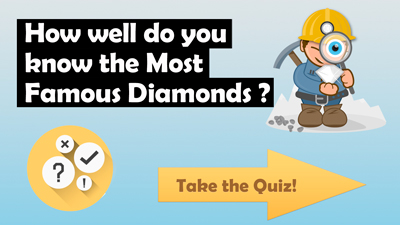
The 99 Most Famous Diamonds Guide
Diamond found in:
Diamond's color:
26th Congress of the Communist Party of the Soviet Union diamond
The XXVI Congress of CPSU diamond has been mined on December 23rd 1980 by T. N. Popov. This 342.57-carat diamond was named in honour of the historic 26th Congress of the Communist Party of the Soviet Union, which took place on February 23rd, 1981. Coming from the Mir mine kimberlitic pipe, in the town of Mirny, the 26th Congress is, to date, the largest diamond found in Russia (or the entire territory of the former USSR, for that matter).
Click here to tweet the 26th Congress of the CPSU diamond and its picture.
As the astute readers may have guessed, the date of the Congress (the event, just to make it clear) is no coincidence, seeing as the delegates participating saw a great opportunity to make the grandiose occasion even more grandiose by unveiling the diamond. On that note, it is worth mentioning that the delegates were the first people to see the diamond in the Russian Diamond Fund, outside of the Mir mine employees and the Diamond Fund personnel directly involved in its finding, transport and safekeeping. Like a number of other significant finds, the 26th Congress has never been put on sale, and still remains uncut in all its lemon-yellow splendour.
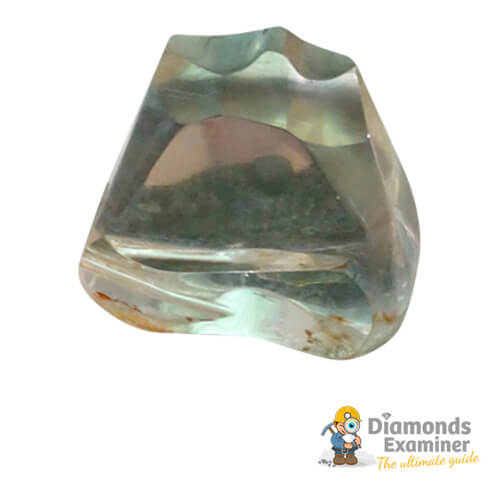
Akbar Shah (aka The Lustre of the Peacock Throne) diamond
The Akbar Shah, aka the Lustre of the Peacock Throne, is a 73.60-carat colourless diamond, shaped like an irregular drop. It is not known where the Shah was mined, but it has been around since the time of Akbar Shah I of the Mughal Dynasty (hence the name), who ruled the greater part of the Indian subcontinent and modern day Afghanistan from 1556 until 1605. Historians widely agree that the diamond was a part of the famed Peacock Throne (hence the alias), though they’re not certain which part.
Click here to tweet the Akbar Shah diamond and its picture!
That is, until the throne was looted by Nadir Shah of Persia in 1739 and subsequently lost in a meaningless skirmish. Be that as it may, the diamond was inscribed by Akbar Shahs grandson Shah Jahan (the Jahan), well before being lost, which made it one of the most recognizable gemstones in the world. Sadly, the inscriptions were lost when L. M. Auerhaan re-cut the diamond in 1886 by the orders of its then-owner, George Blogg. The process, obviously, reduced the diamond to 73.60 from its original 119 carats.
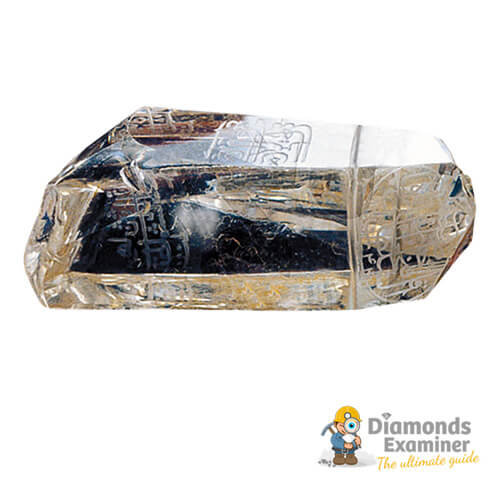
Alexander Pushkin diamond
The second largest diamond ever found in Russia (or territory of the former Soviet Union), the 320.65-carat Alexander Pushkin was almost named the Indestructible Soviet Union. Given the fact it was mined in 1989 (in the Udachnaya kimberlitic pipe, Yakutia), a mere two years before the collapse of the Soviet Union, it’s perhaps for the best that the name did not catch on. Interestingly enough, it might have not been named after the great Russian poet had it been more perfect; for better or worse, the diamond features several cracks, which make its cutting all the more challenging.
Click here to tweet the Alexander Pushkin diamond and its picture!
These, presumably, also indicate that it is a part of a larger diamond, which is yet to be discovered. As for the appearance, it is colourless, and raw, as of yet. Today, it sits pretty in the Russian Diamond Fond in the Moscow Kremlin, along with the XXVI Congress of CPSU and The Creator, first and third largest diamonds found in Russia, respectively.
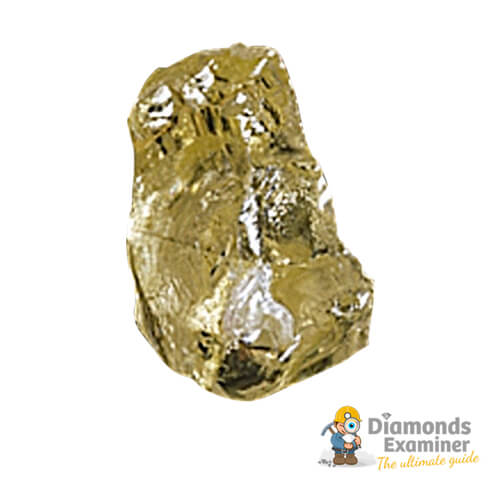
Allnatt diamond
The Allnatt Diamond is 101.29-carat diamond (second cut), with fancy vivid yellow colouration, as the experts would say. It was named after one of its owners, a certain Major A. E. Allnatt, an English businessman and, as it often happens with businessmen, a philanthropist. Very little is known about the diamond’s past prior to the moment the Major made his purchase somewhere in the early 1950s, though experts think it may have well been mined in South Africa – in De Beers Premier Mine, to be more specific.
Click here to tweet the Allnatt diamond and its picture!
As noted above, the diamond is rated as fancy yellow vivid (all the more intense after the re-cut), which in and of itself is not that extraordinary, but its weight and colouration combined do make it quite unique. With this in mind, the fact it was sold in 1996 for US $3,043,496 (by Christie’s, in Geneva) should not come as much of a surprise.
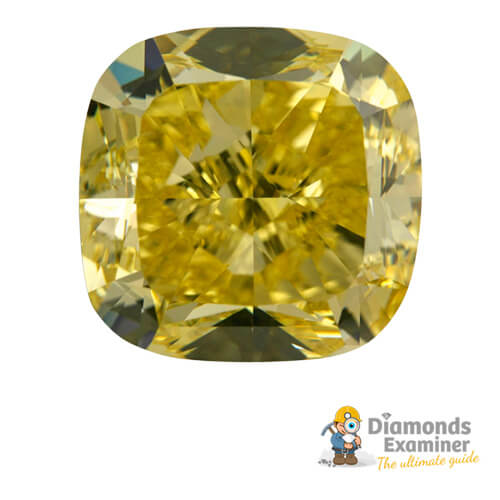
Amarillo Starlight diamond
The Amarillo Starlight is best known for being the single largest diamond (as of yet) found by a visitor in the Crater of Diamonds State Park (Arkansas) since its inception as a state park in 1972. The diamond itself was found by one W. W. Johnson, a native of Amarillo, Texas (hence the name), only three years after the park opened.
Click here to tweet the Amarillo Starlight diamond and its picture!
Upon its discovery in 1975, the Starlight was 16.37 carats, but has since been cut into a marquise shape, weighing 7.54 carats (this makes it the fourth largest diamond found in the area). Due to a flaw in its centre, the diamond had almost been cut into a 5-carat pear shape, which might have been worth some $15,000. As is, its estimated value ranges between $150,000 and $175,000. Incidentally, visitors may dig for diamonds, for a nominal fee, and they get to keep anything they find, regardless of the value.
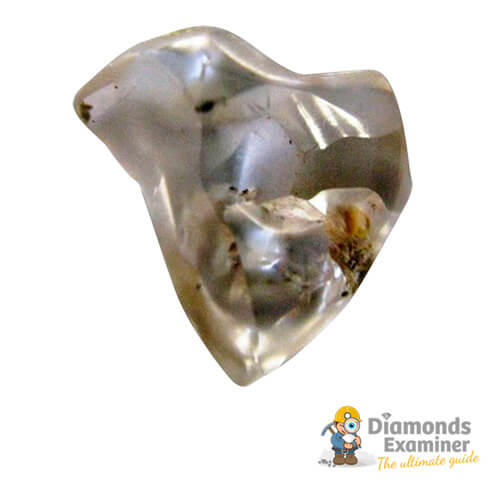
Amsterdam diamond
The 33.74-carat Amsterdam Diamond gets its name, quite obviously, from the city of Amsterdam in the Netherlands, which is hardly a surprise, considering the central position the city plays in the international diamond trading network. The diamond was purchased in 1972 by the company Drukker & Zn and named after the city in honour of its 700th birthday.
Click here to tweet the Amsterdam diamond and its picture!
The company purchased the diamond not long after its purely accidental discovery in South Africa. Namely, the diamond had initially been set aside with a large chunk of mine bort (rough diamonds unfit for one reason or another to be cut into gems) to be ground into diamond powder. It just so happened that an agent of the company was visiting South Africa, and was shown this curious black stone. He examined it and bought for an undisclosed amount, after which the diamond was taken to Amsterdam and cut into a pair shape, the better to highlight its adamantine lustre.
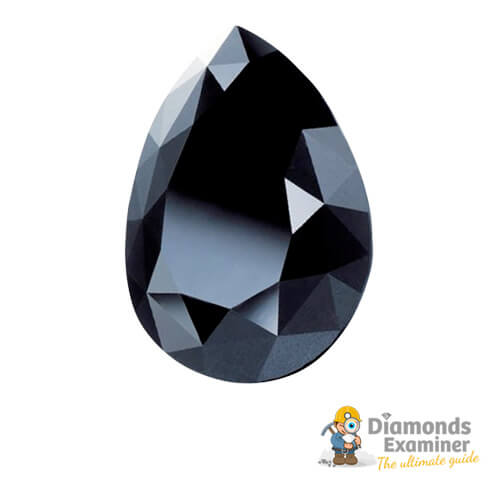
Archduke Joseph diamond
The Archduke Joseph is a colourless, 76.45-carat cushion-shaped diamond that shares its place of origin (the Golconda mines of India) with the famed Koh-i-Noor, Daria-i-Noor, Hope Diamond and many others. The diamond was obviously named after its first documented owner, Joseph August, the Archduke of Austria, of the House of Habsburg-Lorraine. The first evidence of the diamonds existence comes from 1933, when said duke deposited it in the vaults of the Hungarian General Credit Bank.
Click here to tweet the Archduke Joseph diamond and its picture!
The second excitement in the diamond’s life comes in 1936, when it was auctioned off to an undisclosed buyer from France. It survived the WWII without being discovered by the Germans, resurfacing in 1961 at an auction in London, then again in 1993 at another auction in Geneva, without being sold on either occasion. It was finally bought by yet another anonymous buyer for a whopping $21,474,525 in 2012, having previously been re-cut from 78.54 to the current 76.45 carats to improve its clarity, as well as symmetry.
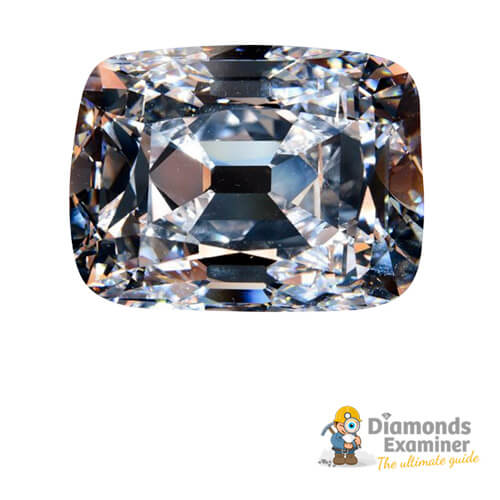
Argyle Pink Jubilee diamond
When it was unearthed in the Argyle mines of Western Australia (hence the name) in 2011, the Pink Jubilee was 12.76 carats, and the biggest pink diamond to ever be found in the mine. Chances are that this will remain the largest pink diamond ever mined from the mines owned by the Rio Tinto Group, seeing as they had made the estimate that the supply of the pinks will be exhausted by the early 2020s.
Click here to tweet the Argyle Pink Jubilee diamond and its picture!
However, as Richard How Kim Kam, the expert in charge of cutting and polishing the Jubilee soon found out, there was a fatal flaw in it that put a stop to the process. As is, the light pink diamond is still semi-raw, the cutting having started before they could notice the flaw, and now sits pretty at 8.01 carats in the Melbourne Museum. Initially, its value was estimated to be at least $10,000,000, but it is hardly to fetch that much in its current condition.
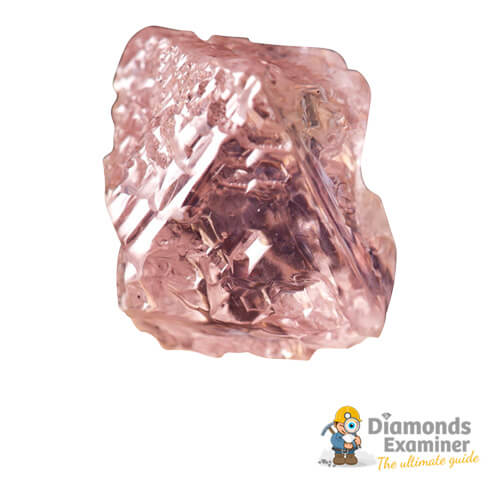
Ashberg diamond
The Ashberg Diamond is a 102.48-carat cushion-shaped diamond (obviously), with exceptionally unique amber colouring, which gives it almost metallic appearance. The diamond was named after one Olof Ashberg, a Swedish businessman and a left sympathizer who was one of the chief financers of the Bolsheviks before, during and after the civil war in what was then Imperial Russia.
Click here to tweet the Ashberg diamond and its picture!
After the Bolsheviks won, however, and established a state, the government headed by Lenin appointed Ashberg as the first head of the Ruskombank (the first international bank of the fledgling Soviet State), which was a very advantageous position that allowed him to purchase the diamond in 1934. As for the diamond itself, it was apparently a part of the Russian Crown Jewels, though it was apparently a fresh addition at the time. Not much is known about its history, though experts think it was mined in South Africa, based on its characteristics.
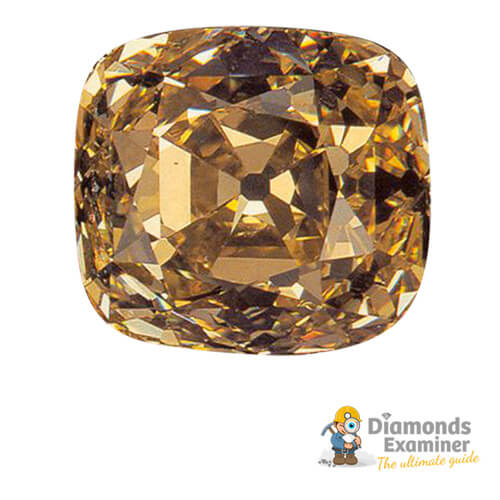
Beau Sancy diamond
The Beau Sancy is a 34.98-carrat diamond of exceptional historic importance, given the fact t was owned by several of European royal houses. It was named after one of its earliest holders, one Nicolas de Harlay, lord of Sancy (hence the name), who was in service of King Henry III of France. In one version of the story, he probably acquired the diamond during his sojourn in Constantinople as the ambassador to the court of Sultan Selim II, and in the other it was in India.
Click here to tweet the Beau Sancy diamond and its picture!
To cut a long story short, it ended up in the possession of King Frederick I of Prussia, of the House of Hohenzollern, and it has remained a prized piece of the family even after the end of the monarchy in Germany, and was finally auctioned off in 2012 by Sotheby’s in Geneva to an unknown bidder. The amount bid was an impressive CHF 9,040,000, or approximately US $9,570,000.
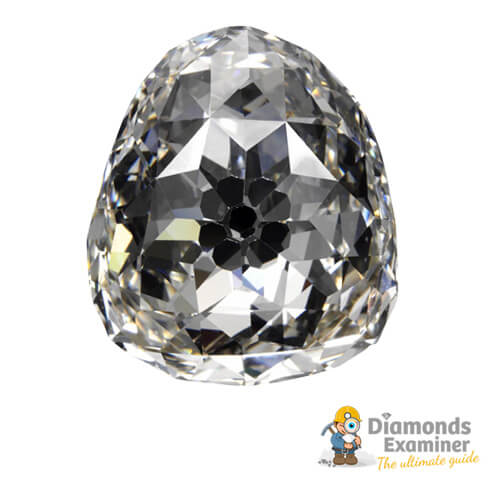
Black Orlov diamond
The Black Orlov diamond is pretty much what it reads on the label – a rare black, cushion-cut stone weighing 67.50 carats, making it the 7th largest black diamond unearthed so far (though some debate it is actually gun-metal dark). It is said that the diamond takes its name after Princes Nadia Vyegin-Orlov, though its origin and history reach much deeper, according to the legend. Originally, the story goes, the diamond was one of the eyes of a Brahma statue in Pondicherry, when it was stolen by a monk.
Click here to tweet the Black Orlov diamond and its picture!
Brahma, obviously, cursed the stone so that anyone who owns it would kill themselves, and, as chance would have it, that’s what happened over and over again. The story became so ingrained in people’s minds that one C. H. Winson had it cut upon purchase attempting to break the curse, breaking the initial 195-carat stone into three pieces. Today, the Black Orlov makes a part of a 108-diamond brooch suspended from a 124-diamond necklace, in possession of D. Petimezas, a diamond dealer from New York.
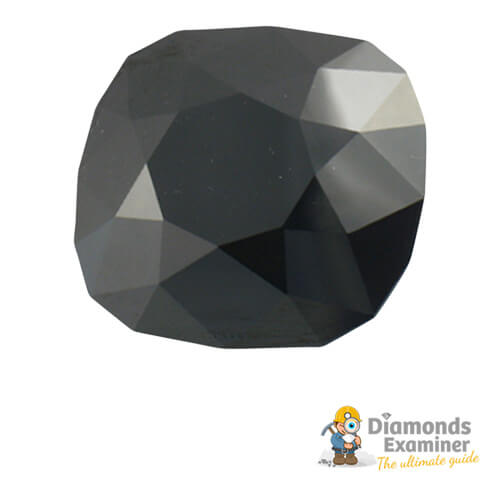
Blue Moon of Josephine diamond
The Blue Moon of Josephine is, as the name suggests, an exceptionally beautiful vivid blue diamond weighing 12.03 carats, unearthed in South Africa in early 2014. It is noted for setting up the record price in November 2015, when it was bought for $48,400,000 at an auction held by Sotheby’s in Geneva. Another, perhaps more piquant detail is that the stone was bought by a Hong Kong billionaire Joseph Lau Luen-hung as a present for his 7-year old daughter, after whom it takes its name.
Click here to tweet the Blue Moon of Josephine diamond and its picture!
The diamond itself is described as flawless by the experts, cushion-cut to underline the lustre of its fancy vivid colouration. Interestingly enough, the Blue Moon was not the only purchase made by Joseph Lau at that auction, as he had also bought a 16.08-carat pink diamond for a mere $28,500,000, compared to the Blue Moon. Together with the Star of Josephine, another blue diamond Lau bought for his daughter, this makes for a nice pet-rock collection.
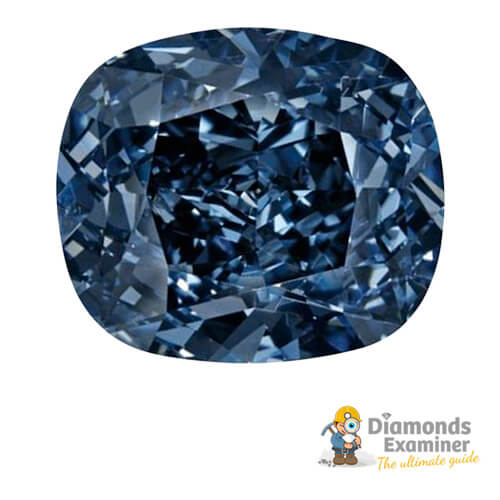
Briolette of India diamond
The unimaginatively named Briolette of India is, obviously, a briolette-cut colourless diamond, weighing 90.38 carats. Briolette is, incidentally, a type of gemstone cut that is elongated, with multiple facets and a hole to thread it so that it hangs like a bead. The style was very popular in Victorian times, though the diamond in question is much, much older.
Click here to tweet the Briolette of India diamond and its picture!
As a matter of fact, it is considered the oldest diamond in the world, pre-dating even the famed Koh-i-Noor. Although the stone is named for its place of origin, the first known owner was Eleanor of Aquitaine, who in all likelihood passed it on to her son Richard I of England, better known as Richard the Lion Heart. He allegedly took the diamond with him when he took part in the Third Crusade (1189–1192), though it disappeared from historical records afterwards, until it resurfaced in the possession of King Henry II of France more than three centuries later. Currently, the stone is in one of its hiding phases.
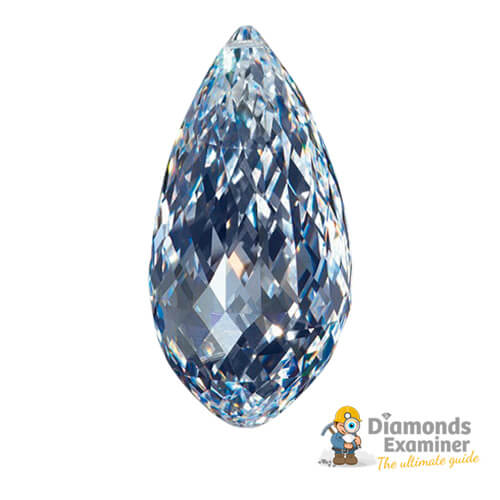
Centenary diamond
The Centenary Diamond was discovered on July 17, 1986, in the Premiere mine in South Africa. This is, to date, the third largest ever found in the mine, with only the Cullinan I and Cullinan II being larger. At the time, only a handful of people knew about the discovery, and it was not presented to the public (and even then, not fully) until 1988, which celebrated the centenary (hence the name) of the De Beers Consolidated Mines Ltd.
Click here to tweet the Centenary diamond and its picture!
The cut version was unveiled even later than that, as late as May 1991. On that same note, the raw diamond did yield another a pair of pear-cut diamonds, 1.47 and 1.14 carats respectively. Internally and externally, the stone is considered flawless by the experts. Colourless and weighing 273.85 carats, the gem features a modified heart-shaped cut with 247 facets total. It is comparably the size of a large walnut – a walnut insured at over $100,000,000.
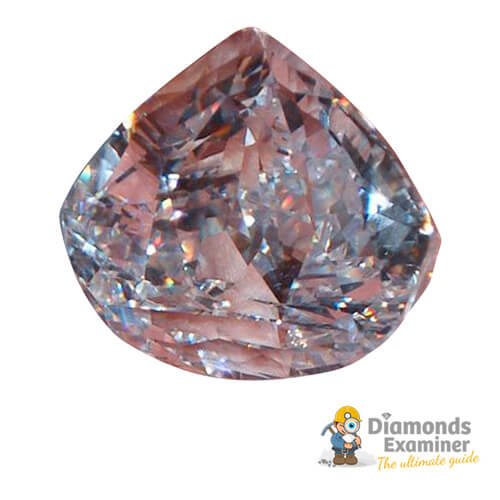
Chloe diamond
The Chloe Diamond is, to date, the second largest pure colourless diamond to ever be offered at an auction and the third largest in the world. Sold by Sotheby’s in Geneva in 2007, to Georges Marciano, an American businessman and founder of Guess? Jeans, the stone set a record price of CHF18,193,000 (or $16,189,769). Marciano bought the diamond for his then 12-year-old daughter Chloe, after whom the stone takes its name. Interestingly enough, the previous owner of the Chloe, Ron Cohen, had purposely refrained from even nicknaming the diamond, providing more than enough incentive for Marciano to buy it.
Click here to tweet the Chloe diamond and its picture!
In retrospect, this was a great business move on Cohen’s part, considering everyone would jump at the occasion to have the privilege of naming a diamond. The Chloe is, as noted earlier, a colourless diamond, considerably large – weighing 84.37 carats, round-cut and considered internally flawless. It is a pity that cutting resulted in a loss of about 77% of its weight, but the results more than make up for it.
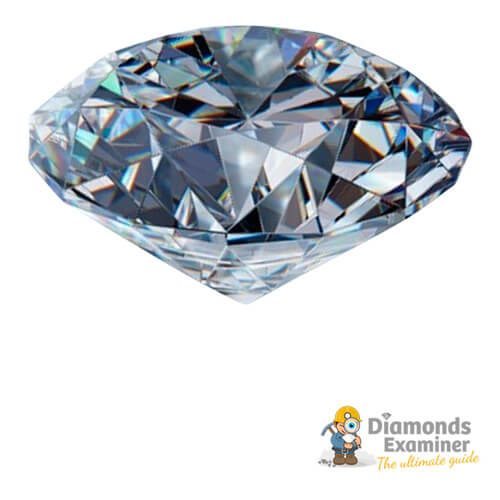
Cora Sun-Drop diamond
Considered the largest pear-shaped yellow diamond in the world, the Cora Sun-Drop weighs 110.30 carats. It was sold in November 2011 at an auction by Sotheby’s in Geneva, to an anonymous telephone bidder for the modest price of $10,900,000, incidentally setting the current record for yellow diamonds. There is not much to tell about the Sun-Drop or its history before the 2011 auction, and even less so after.
Click here to tweet the Cora Sun-Drop diamond and its picture!
It was found within a kimberlitic pipe in South Africa in 2010, then cut by Cora International, the same company that owned it. The only exciting moment in its life before being sold was the exhibition at the London Natural History Museum on February 24th 2011, where it spent some time with other precious stones such as the Duke of Devonshire Emerald and the Aurora Pyramid of Hope, an impressive 296-piece collection of natural diamonds. After Geneva 2011, it pretty much disappears from the stage.
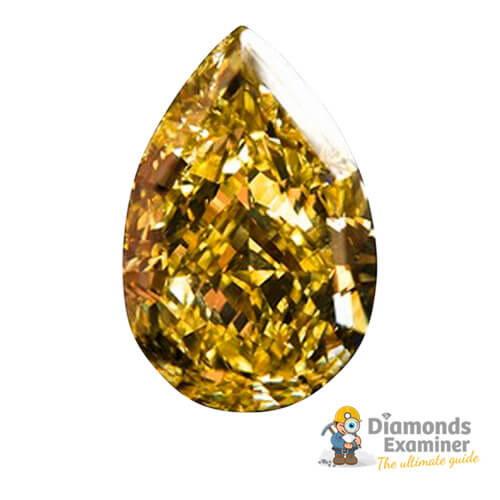
Creator diamond
The Creator is the third largest diamond ever to be found in Russia, or the entire territory of the former Soviet Union, for that matter, coming hard on the heels of the 26th Congress of the Communist Party of the Soviet Union and the Alexander Pushkin, first and second largest, respectively. On the flipside, it is the largest post-Soviet diamond ever found in Russia, having been unearthed in 2004. For its part, the Creator weighs 298.48 carats, and it still sits raw in the Russian Diamond Fund in Moscow Kremlin.
Click here to tweet the Creator diamond and its picture!
It is a coloured rough stone mined in the lower reaches of the Lena River in the eponymous mining facility, by a process called placer mining. This, essentially, translates into everyday English as mining the river deposits, not too dissimilar to panning for gold, but on a much larger scale. As the astute readers may have already guessed, the stone has never been put on sale.
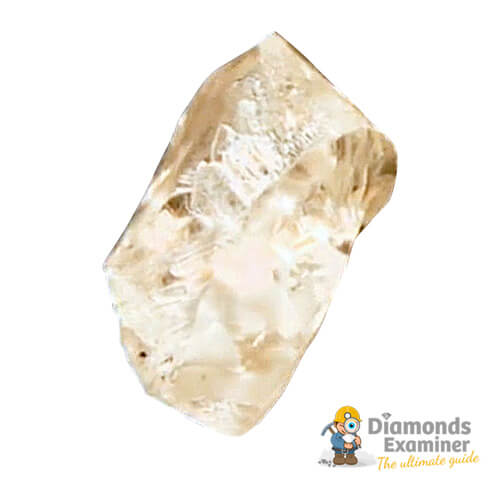
Cross of Asia diamond
The Cross of Asia was unearthed in the Jagersfontein Mine back in 1902 (the mine is now long abandoned). Upon discovery, this champagne-coloured stone weighed 280 carats, which was to be reduced to 142 carats on the first cut. Today, after four total cuts, it is a 79.12-carat cushion-shaped diamond of a truly unique colouring. Interestingly enough, champagne diamonds (light brown), much like their cognac (brown with reddish or orangish tint) and coffee (deep or vivid brown), have long been fairly unpopular, but their star seems to be on the rise.
Click here to tweet the Cross of Asia diamond and its picture!
There is now much appreciation for all the various shades of brown diamonds, with champagne being the most popular, apparently. However, the most distinctive feature of the Cross of Asia, one partially responsible for the name, is the way it was cut – the diamond is radiant-cut (similar to cushion, but slightly different), with table that combine to resemble a Maltese Cross.
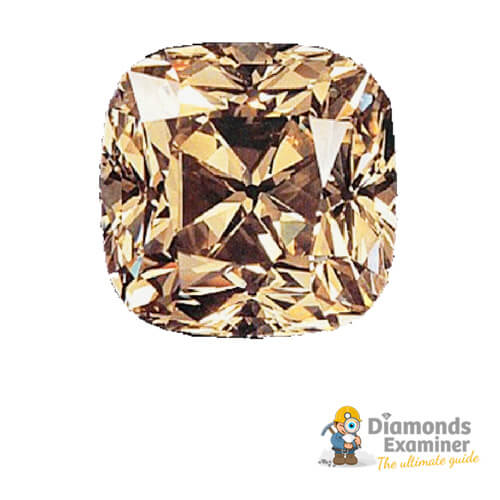
Cullinan diamond
The Cullinan Diamond is easily the largest single gem-like stone ever to be unearthed, period. It was mined at the Premiere No. 2 mine in Cullinan, back in 1905 (on 26th of January, to be exact), in what is today South Africa. Rough, the gem weighed full 3,106.75 carats and had a white colouration. It has since been cut into nine equally impressive pieces.
Click here to tweet the Cullinan diamond and its picture!
The story of how the diamond made its way to England is worthy of retelling. A replica was made and placed under guard on a steamboat to England. The box containing the replica was very publicly sent off, with detectives on board to look after it, while the real diamond was packed in an unmarked box and sent by post like so much coal (which, to be honest, is not far from truth). Upon arrival, the replica was made present to Sir Winston Churchill, while the diamond itself was presented to King Edward VII, as a sign of loyalty from the Transvaal government.
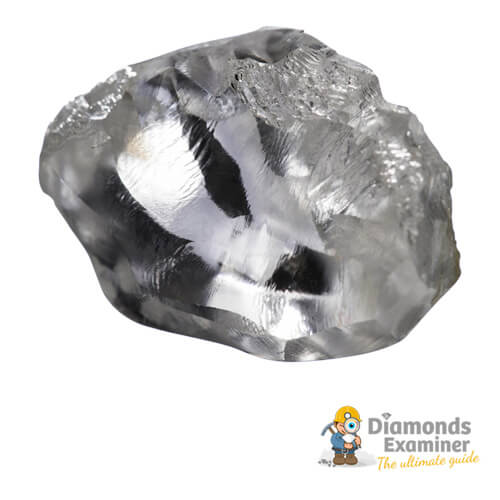
Cullinan I (The Great Star of Africa)
The Cullinan I, also known as the Great Star of Africa, is the largest piece cut from the Cullinan Diamond mined back in 1905 in what is today South Africa. It is a modified pear-cut stone weighing 530.20 carats, with 74 facets total, retaining the white colour of the original piece. The Great Star of Africa is, as of yet, the largest cut diamond in the world, and can stand toe to toe with many raw stones.
Click here to tweet the Cullinan I diamond and its picture!
Much like the rest of the Cullinan pieces, the Cullinan I is a part of the royal jewels of the English monarch. It has an honorary position at the top of the Sovereign’s Sceptre with Cross, which even had to be modified in order to fit the Star. Moreover, it also features a tiny platinum loop, so that it can be taken off the sceptre and joined with the Cullinan II to make a brooch.
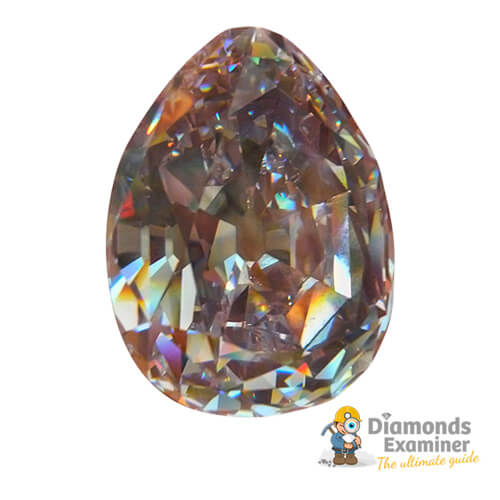
Cullinan II diamond (aka The Second Star of Africa)
The Cullinan II, as the astute readers may have already guessed, is the second largest piece cut from the Cullinan Diamond that had been mined in South Africa in 1905, and presented to King Edward VII. It is also sometimes called the Second Star of Africa, though the nickname does not have quite the same ring to it as the Great Star of Africa.
Click here to tweet the Cullinan II diamond and its picture!
On a more serious note, the Cullinan II, much like the rest of the nine pieces of Cullinan, makes a part of the regalia of the English monarchs. It is a cushion-cut diamond currently set in the front of the Imperial State Crown (this is not the crown worn at coronation, that would be the St Edward’s crown), though it can be taken off and joined with its larger cousin, the Cullinan I, to make a brooch. For this purpose, both gems feature little platinum loops on one end.
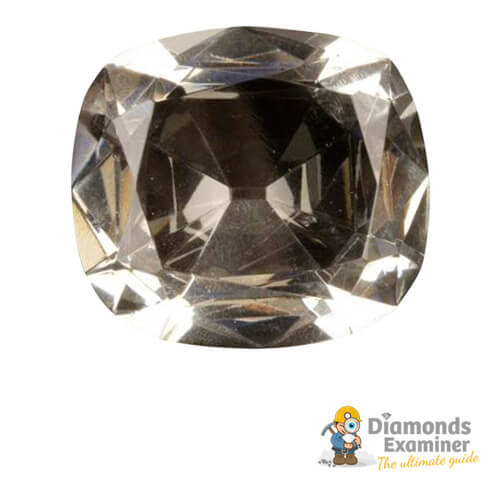
Daria-i-Noor diamond (aka The Sea of Light, The Ocean of Light and The River of Light)
The Daria-i-Noor, also known variously as the Sea of Light, the Ocean of Light or the River of Light, is the single largest pink diamond by a large margin. It weighs an estimated 182 carats, though this cannot be confirmed without taking it out of the frame (which would destroy said frame), and makes a part of the Iranian Royal Jewels. Originally, the Daria-i-Noor was unearthed in the Golconda Mines, much like the famed Koh-i-Noor, Hope Diamond or the Nassak Diamond. It was initially in possession of the Kakatiya dynasty, only to pass to the Mughals, and eventually be looted by Nadir Shah of Persia in 1739, along with the Koh-i-Noor and the entire Peacock Throne.
Click here to tweet the Daria-i-Noor diamond and its picture!
Inseparable from its colourless cousin, the Koh-i-Noor (Mountain of Light), the Daria-i-Noor was acquired at a later time by Ranjit Singh, the founder of the Sikh Empire, coming into the possession of the East India Company with the fall of Punjab. Today, the diamond rests in the vaults of the Sonali Bank in Dhaka. It is considered that the Daria-i-Noor used to be a part of a larger pink diamond embedded in the throne of the renowned Shah Jahan, as described by the French jeweller Jean-Baptiste Tavernier who visited the court of the Mughal emperor. Historians believe that the diamond was cut into at least two pieces, one of which is the Daria-i-Noor, while the other is the Noor-ul-Ain, also a part of the Iranian Royal Jewels.
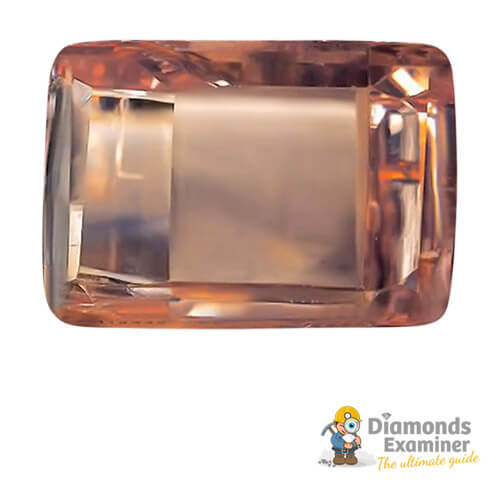
Deepdene diamond
The Deepdene is a cushion-cut bright yellow diamond, weighing 104.52 carats, and currently in possession of an anonymous German owner. The stone takes its name from the Deepdene estate of the Boks, a Pennsylvanian couple and its original owners. The Boks had it set in a diamond clip initially, but Harry Winston, who bought it from them in 1954, had it set in a necklace. It is presumably still a part of a necklace, though there is no way to confirm that, as of yet.
Click here to tweet the Deepdene diamond and its picture!
On that same note, the diamond did originally weigh 104.88 carats, but had to be re-cut. The reason for this is the same as the one accounting for its vivid yellow colour – irradiation. Rather than natural, the colour of the Deepdene is a result of, most likely, being bombarded with neutrons in the early 1950s. Irradiation in those early days tended to leave characteristic marks on diamonds, which accounts for the re-cutting of the Deepdene.
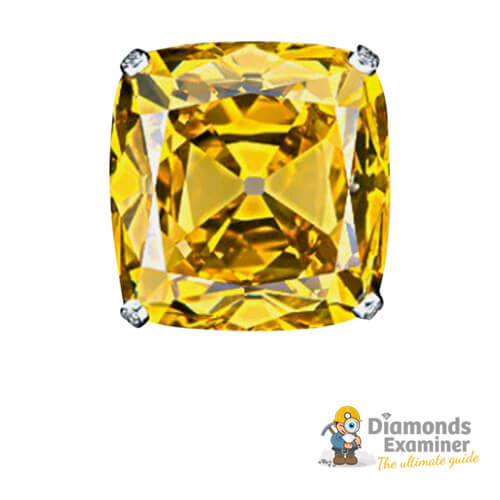
DeYoung Red diamond
The DeYoung Red Diamond is exactly what it says on the label – an exceptionally unique red stone, round-cut and unmounted. It was quite a fortuitous find by Sydney DeYoung, after whom it takes its name, who bought it at a flea market from a vendor who thought it to be a mere garnet (a silicate crystalline mineral that may contain various metals, which account for its colouration).
Click here to tweet the DeYoung Red diamond and its picture!
The DeYoung is deep red, with somewhat of a brownish tint to it. For those not in the know, red diamonds are the rarest type of coloured diamonds, even more seldom found that pink diamonds. This makes the 5.03-carat DeYoung one of the most valuable gemstones in the world, pound for pound, with a price tag in the neighbourhood of up to $5,000,000. Today, it its caretaker is the Smithsonian Institution, having been given the diamond after its DeYoung’s death in 1986.
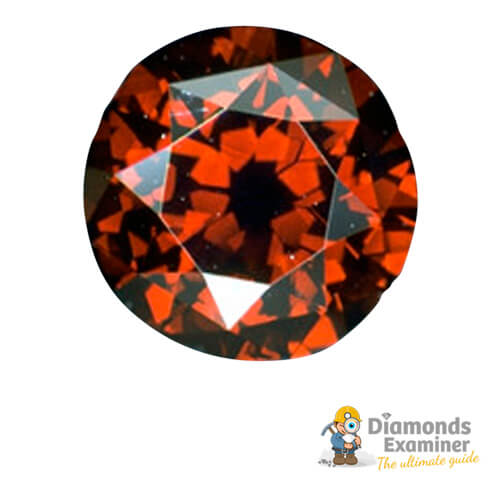
Dresden Green diamond
The Dresden Green is a 41-carat, pear-cut natural green diamond. Obviously, the stone takes its name after the City of Dresden, which is the capital city of the Free State of Saxony, Germany, and an important cultural centre. The gem itself, however, is not of Dresden initially. It was most likely mind at the Kollur Mind in Andhra Pradesh, judging by its characteristics, though the first written record of it dates from 1722, when it featured in an article of a London news-sheet.
Click here to tweet the Dresden Green diamond and its picture!
Apparently, its first owner was Augustus III, King of Poland, who bought it from a Dutch merchant at the Leipzig Fair (1742). The diamond was late incorporated into a hat ornament, along with two other large diamonds, as well as another 411 small and medium-sized ones. The whole ornament sits pretty in its preserved form in the New Green Vault within the Dresden Castle, though it did tour the United States in 2000, when it was exhibited at the Smithsonian next to the equally famous Hope Diamond.
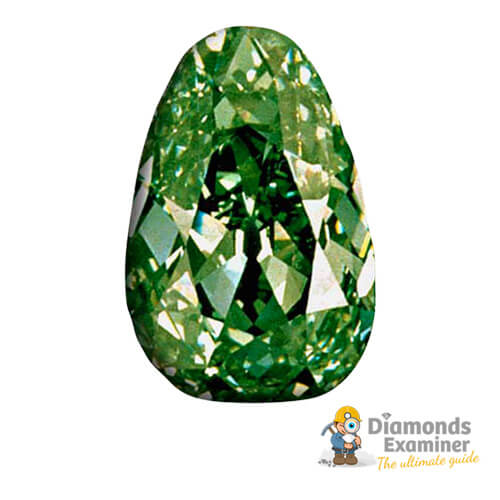
Dresden White diamond
The Dresden White diamond is, obviously, a cousin of the equally famous Dresden Green, hence the shared part of the name. The latter part stems from the fact that this 49.71-carat cushion-cut stone is white, or, rather, colourless (the experts categorize it as a D-colour diamond).
Click here to tweet the Dresden White diamond and its picture!
Much like the Dresden Green, the Dresden White used to be a part of a magnificent collection of gems and jewellery in possession of Frederick Augustus II (the Strong). The diamond is believed to be from the famed Golconda mines of India, mostly due to its superb clarity. Today, as it has for the greater part of its existence, the diamond rests in Dresden.
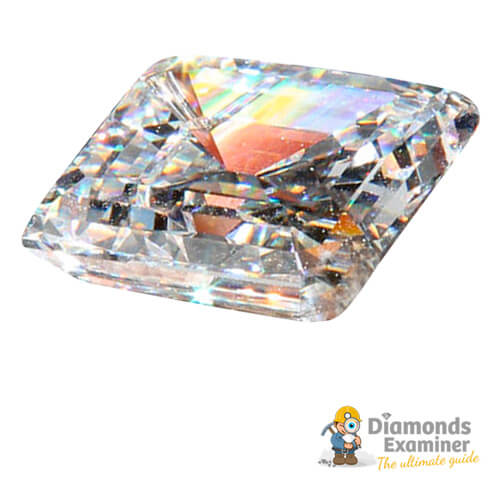
Dresden Yellow diamond
The Dresden Yellow is a bit less known cousin of the storied Dresden Green and Dresden White diamonds. Much like the name says, it’s a yellow-coloured diamond, round-cut to the weight of some 38 carats.
Click here to tweet the Dresden Yellow diamond and its picture!
It is not known where the diamond comes from, though it stands to reason it originated in India, not unlike the other two famous stones Frederick Augustus II bought at Leipzig Fair in 1741 (probably from the same Dutch merchant, as well). Much like its cousins, the Dresden Yellow sits pretty today in the Green Vault at the Albertinium Museum in Dresden.
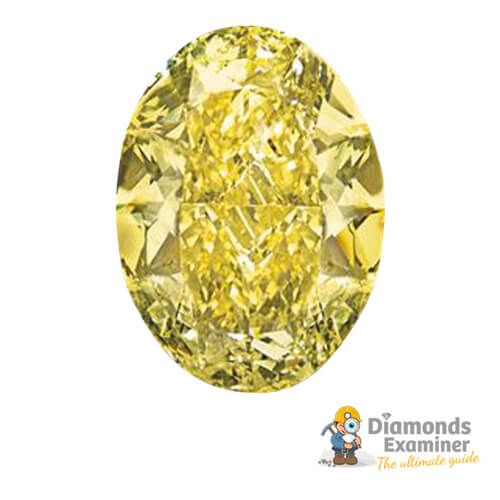
Edcora Red diamond
The Edcora Red Diamond is a mysterious trinket, as not much is known about this stone other than its weight, shape and last known location – 5.71 carats, modified pear and Hong Kong, respectively. Granted, the stone’s named red, which is a fair enough description, but if we wanted to be more precise, we’d describe it as fancy red-brown.
Click here to tweet the Edcora Red diamond and its picture!
However, it is important to note that this is claimed to be the single largest red diamond in the world. On that note, it is notoriously difficult to find any pictures of the diamond or confirmations that it still exists, so the largest confirmed red diamond is still the Moussaieff Red.
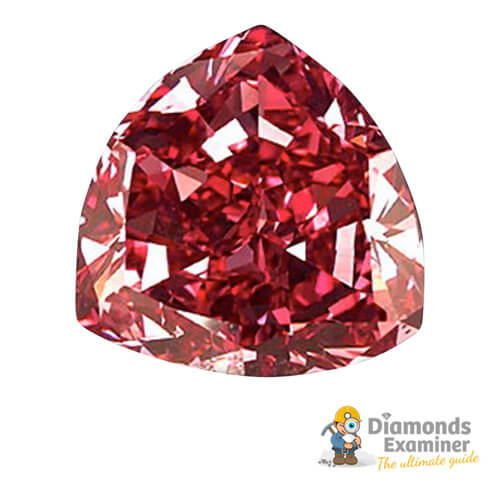
Earth Star diamond
The Earth Star Diamond is a positively lovely pear-shaped gem of extraordinarily strong brown colour and unique brilliance. The raw diamond was unearthed at one of De Beers’ mines (the Jagersfontein) in 1967, and it weighed 248.9 carats at the time, but has since been cut to the current 111.59 carats.
Click here to tweet the Earth Star diamond and its picture!
The gem caused quite a commotion at the mine, because it was, and still remains, one of the few brown gems uncovered at the Jagersfontein. Today, the Earth Star is in private hands, having been bought in 1983 by one Stephen Zbova of Naples, Florida, for the sum of $900,000.
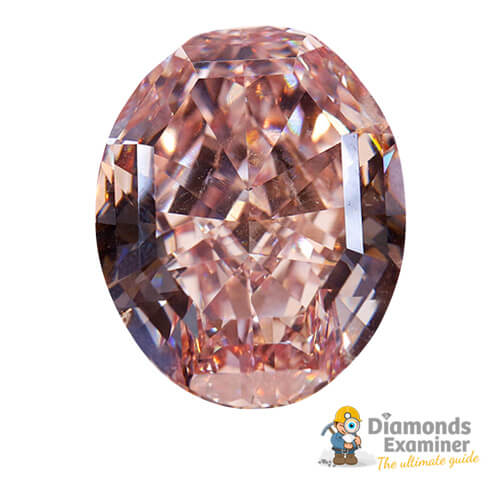
Eureka diamond
The very aptly named Eureka Diamond was the very first diamond to be discovered in South Africa. The rough diamond was discovered in 1867 by a 15-year-old whose name deserves full mention - Erasmus Stephanus Jacobs. At the time, it weighed 21.25 carats, but has since been cut to its current 10.73-carat cushion-shaped brownish yellow colour brilliance.
Click here to tweet the Eureka diamond and its picture!
An interesting fact is that the diamond was purchased by De Beers for the centenary of its discovery (1967) and gifted to the South African people; today it rests at a place of honour at the Kimberley Mine Museum.
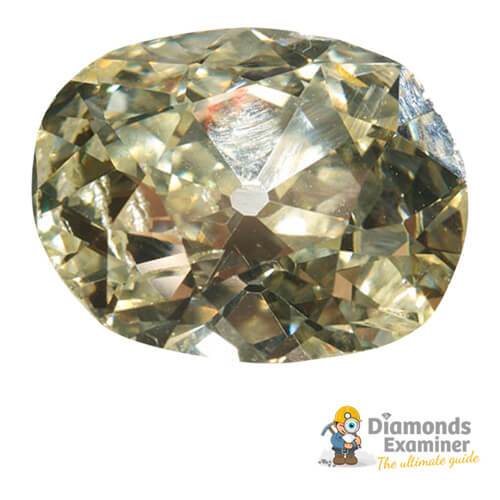
Empress Eugénie diamond
The Empress Eugénie is a colourless diamond with a long and storied history. The perfectly cut oval-shaped brilliant, weighing 51 carats, used to belong to the Empress Eugénie, spouse to Napoleon III, after whom it takes the name. However, the first recorded owner was another empress – the Empress Catherine II the Great, who later gifted it to her purported lover Grigory Aleksandrovich Potemkin.
Click here to tweet the Empress Eugénie diamond and its picture!
The stone was for this reason initially known as the Potemkin Diamond. Neither its origin nor current location is known, though it did appear in 1998 as a part of the Treasures of the Tsars exhibit, after which it disappears again from the scene.
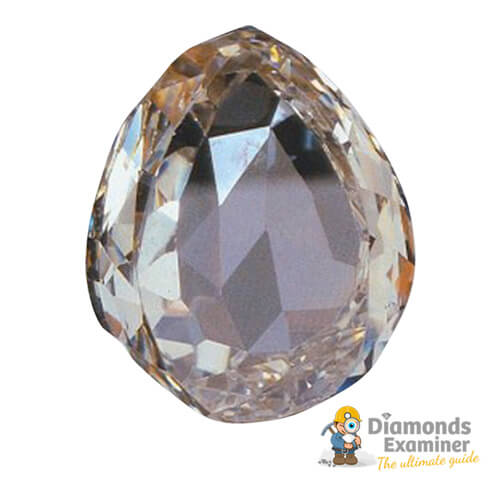
Esperanza diamond
The Esperanza (Spanish for “hope”) Diamond is said to be the most valuable diamond ever found in the US, with an estimated value in excess of $1 million dollars (though most experts agree this is an extremely conservative estimate, given the stone’s uniqueness).
Click here to tweet the Esperanza diamond and its picture!
Not only is this custom-cut icicle-shaped stone among the five largest diamonds found in the Diamond Crater Park, AR (8.52 raw, 4.602 cut), but its clarity is almost unparalleled. The rough stone was found in July 2015 by one Bobbie Oscarson of Colorado, who named it in honour of her niece, Esperanza, and had it set in a gorgeous pendant.
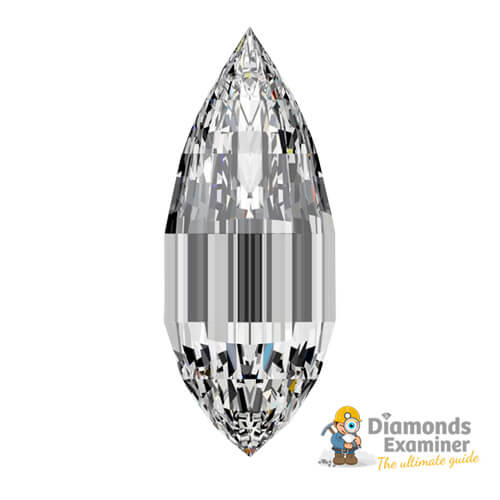
Excelsior diamond
The Excelsior Diamond had had the honour of being the largest diamond ever found for some 12 years until Cullinan was unearthed in 1905. The rough stone weighed in at 995.2 carats (971 old carats) and was predominantly white, with a light bluish tint to it. The stone was named, in all likelihood, for its size and shape – “excelsior” being a Latin word for “higher, superior, ever upward”.
Click here to tweet the Excelsior diamond and its picture!
It was eventually cut into ten smaller pieces, the largest being the pear-shaped Excelsior I (69.68 carats), worth $2,642,000 and currently sitting pretty in a diamond bracelet. Interestingly enough, Excelsior never enjoyed the same fame as Cullinan or even some smaller gems, probably due to the fact that it was cut into so many unpardonably small stones.
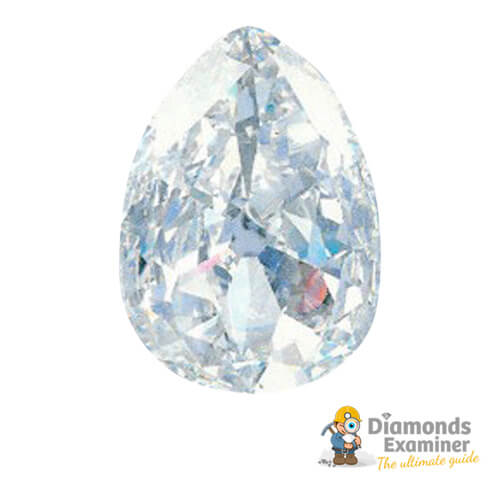
Florentine diamond (aka The Tuscan, the Tuscany Diamond, the Grand Duke of Tuscany, the Austrian Diamond, the Austrian Yellow Diamond)
The Florentine Diamond has long become a lost legend, a titillating afterthought for many gem-cutters and experts, but not so among enthusiasts. The lemony-yellow (with just a slight hint of green) 137.27-carat diamond, cut into a double-rose shape was almost certainly discovered in India.
Click here to tweet the Florentine diamond and its picture!
The name stems from the fact that it’s been in the possession of the Medicis for quite some time. However, its first owner appears to have been a ruler of the Vijayanagara Empire (South India), who lost the gem to the Portuguese, after which it found its way to the Medicis in the 16th century, making a small but noticeable part of their almost 4,000 diamonds strong collection. The family married into the royal family of Austria, when the gem becomes known as the Austrian Diamond, and disappears around the same time as the Austro-Hungarian Empire.
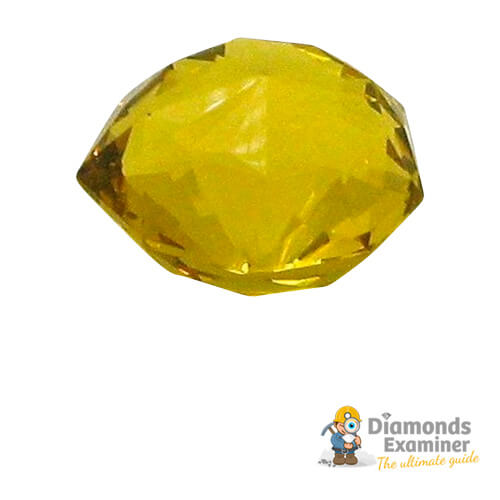
French Blue diamond (aka Tavernier Blue, Le Bijou du Roi, Le bleu de France)
The diamond known as French Blue goes by many names, though the experts mostly speak of it as the French Blue or Tavernier Blue, the latter being the name of its first recorded owner, Jean-Baptiste Tavernier, a 17th century French adventurist and gem merchant. Tavernier brought the stone from India, most likely from the famed Golconda mine.
Click here to tweet the French Blue diamond and its picture!
The weight of the rough diamond is not known, but we do know that it was (re)cut to 68 carats in 1771, and was a part of the French Crown Jewels until it was stolen in 1792. Today, the vivid blue stone is no more, as it was recut into the renowned Hope Diamond weighing 45.52 carats.
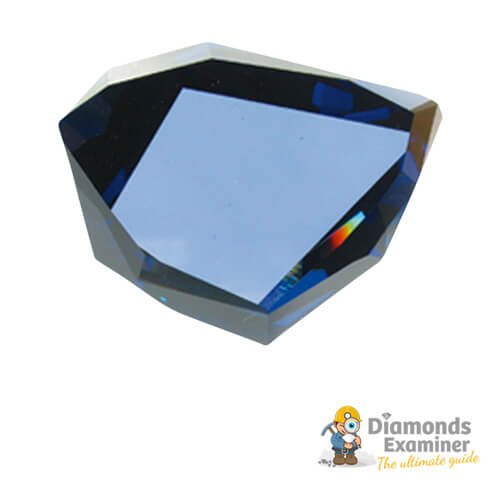
Golden Eye diamond
The Golden Eye Diamond is a large, radiant-cut yellow diamond weighing in at 43.51. The name reflects not only the hue, but also the brilliance and fire of what is believed to be the largest gem of this colour and cut. The experts believe the stone came from one of the Kimberley mines in South Africa, though it’s not clear when it was unearthed.
Click here to tweet the Golden Eye diamond and its picture!
We do know that the rough stone weighed 124.5 carats, and it might potentially be identified with the Du Toit II diamond. If these speculations could be proved true, this would trace the diamond back to at least 1882 and the Dutoitspan mine. Today, the diamond rests in private hands.
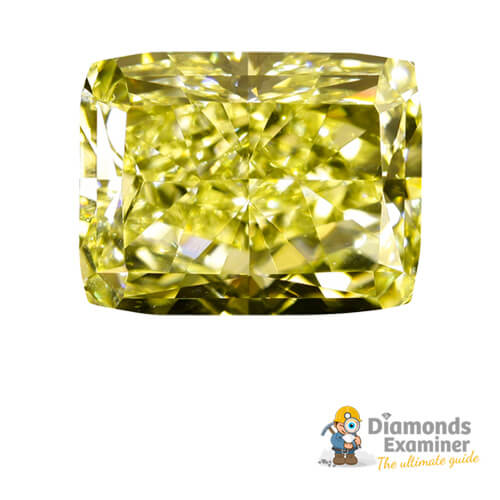
Golden Jubilee diamond
In the right light, the Golden Jubilee (not to be confused with the Jubilee Diamond) looks like something right out of a Tolkien’s book – its unique brown hue and fire rose cushion cut make it appear surreal. The diamond holds one other distinction – weighing in at 545.67 carats, it is the largest cut diamond in the world, outweighing the Cullinan I by more than 15 carats (15.37, to be precise).
Click here to tweet the Golden Jubilee diamond and its picture!
Interestingly enough, both diamonds came from the same mine – the Premier. The stone was presented in 1997 to Rama X, the then King of Thailand, in honour of his Golden Jubilee on the throne, and it still remains a part of the Crown Jewels.
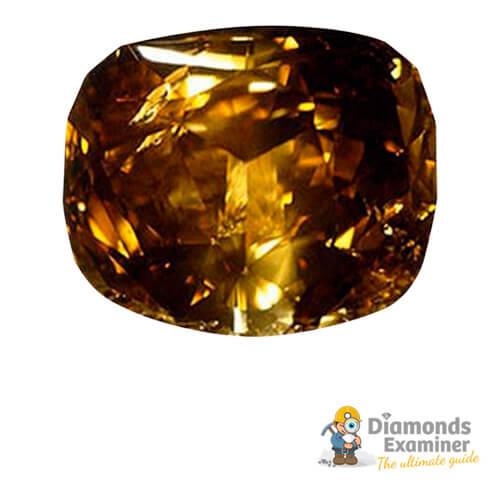
Graff Pink diamond
The Graff Pink is, obviously, a pink diamond weighing in at 24.78 carats (slightly refurbished to 23.88 carats, actually), featuring an emerald cut. At the time it was sold to its current owner, Laurence Graff (hence the name), in 2010, the stone’s worth was and impressive $46,000,000, making it the most expensive single-piece jewel at the time.
Click here to tweet the Graff Pink diamond and its picture!
Pink diamonds are rare enough, but those of such vivid and intense hue are virtually unknown, which makes the Graff Pink even more extraordinary. Not much is known about the diamond’s past, only that it had been in the possession of Harry Winston, an American jeweller, for over 60 years. Today, the Graff Pink sits pretty mounted as a ring.
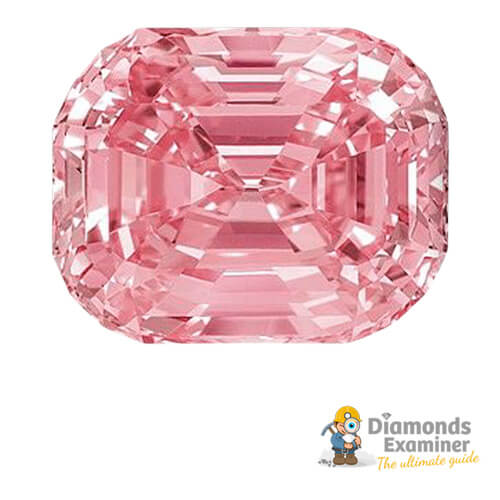
Great Chrysanthemum diamond
The Great Chrysanthemum is a 104-15-carat fancy orange-brown diamond, cut into a modified pear shape that very much reminds of a brilliant egg. Unearthed in 1963 in the Kimberley Mines of South Africa, the rough stone weighed in at 198 carats, and it was originally planned to be cut in two. Luckily, it was bought by Julius Cohen in the early 1970s, and cut under his direction.
Click here to tweet the Great Chrysanthemum diamond and its picture!
It was also Cohen that named the diamond, taking his inspiration from the Chrysanthemum Ball in San Antonio, TX, that he had attended. Cohen did sell the gem to an anonymous buyer, only for it to be later purchased by Garrards of London. Reports say that the diamond has been sold yet again into undisclosed private hands.
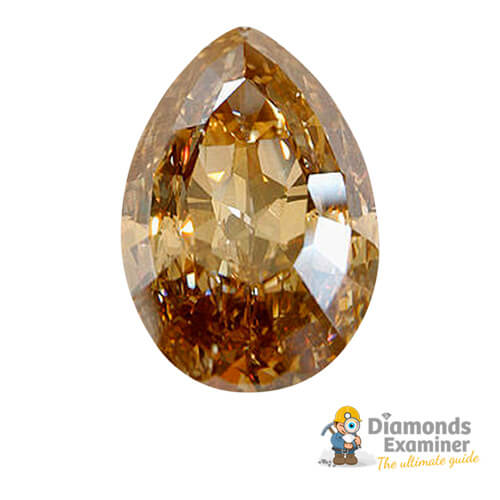
Great Mogul diamond
The Great Mogul Diamond was (“was” being the operating word) a 280-carat rose-cut diamond belonging to Shah Jahan of the Mughal Empire. The stone had been a gift from Emir Jemla, who had sourced it, in all likelihood, from the storied Kollur Mine of southern India. Sadly, the stone was taken as spoils of war by Nadir Shah of Persia, and subsequently stolen.
Click here to tweet the Great Mogul diamond and its picture!
It is said that the diamond was colourless, though with a distinct blue tinge, which gave rise to the theory that the Great Moghul has reappeared as the Orlov Diamond, though this the more likely explanation is that it was cut into a number of smaller pieces to hide the origin.
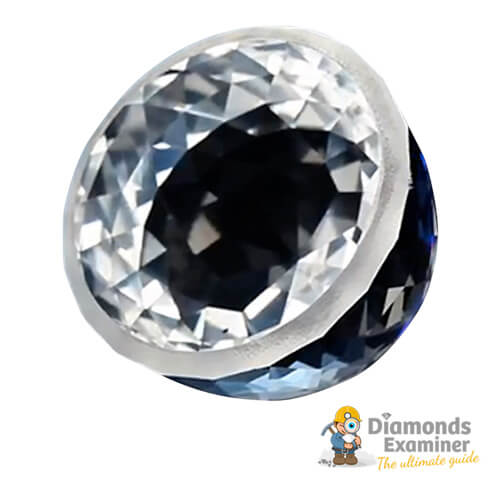
Gruosi diamond
The Gruosi Diamond is a 115.34-carat black diamond cut into a heart shape, and it is hailed as the fifth largest faceted black diamond, and 41st largest faceted diamond overall. The stone was reportedly unearthed in India in 1998, though the precise mine or even region cannot be confirmed.
Click here to tweet the Gruosi diamond and its picture!
It is known that the rough stone weighed some 300.12 carats, and was cut to its current 115.34 carats under the direction of Fawaz Gruosi (after whom it takes the name), a man who pretty much singlehandedly popularized carbonados (or black diamonds). Interestingly enough, the original plan was to cut the diamond oval, but sometime during the process this was changed, for better or worse.
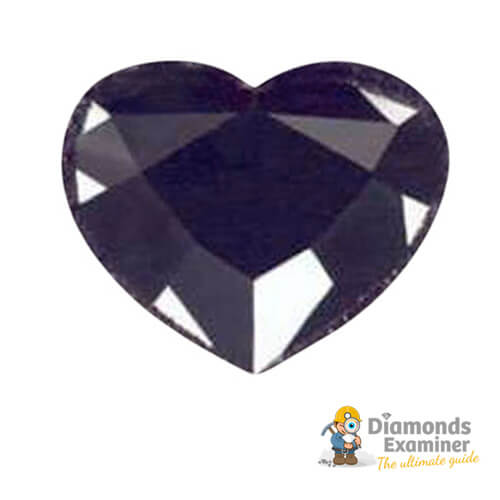
Heart of Eternity diamond
The Heart of Eternity is a 27-64-carat diamond of exquisite blue fancy vivid blue colour mined at the Premier Mine of South Africa, cut into a heart shape and named for it by the master cutters of the Steinmetz Group, who later sold it to the De Beers Group. The stone was unveiled together with nine other rare pieces (such as the Millennium Star) at the onset of the new millennium, and was on display at London’s Millennium Dome the entire year.
Click here to tweet the Heart of Eternity diamond and its picture!
The exhibit grabbed attention of the public, and there was even an attempt to steal the gems on November 7th. The current whereabouts of the diamond is unknown as De Beers refuse to disclose the buyer, though rumours say it was bought by Floyd Mayweather, the famous boxer, as a gift for his fiancée.
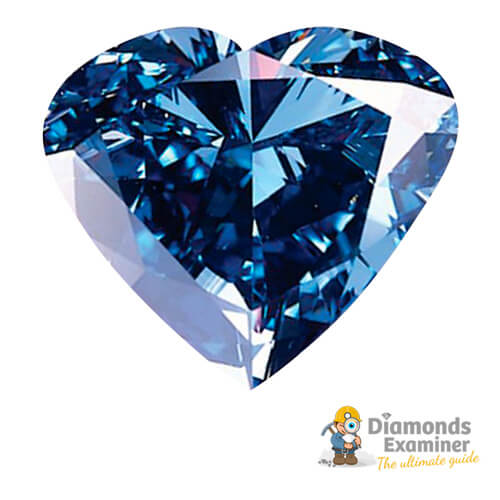
Hope diamond
In terms of fame, the Hope Diamond stands shoulder to shoulder with the likes of the Koh-i-Noor and the Great Star of Africa, and is probably one of the best-researched gems in the world. It is a 45.52-carat diamond of a unique steel blue colouration (fancy dark greyish blue, officially), cut in the antique cushion shape from the historic Tavernier Blue (aka French Blue), after the 68-carat Crown Jewel was stolen during the French Revolution (1779–1789).
Click here to tweet the Hope diamond and its picture!
It takes its name after Henry Thomas Hope, an English banker who was the first recorded owner of the new diamond. The stone changed hands quite a few times before being sold to Harry Winston in 1949. Today, the Hope rests in the Smithsonian Institute in Washington D. C.
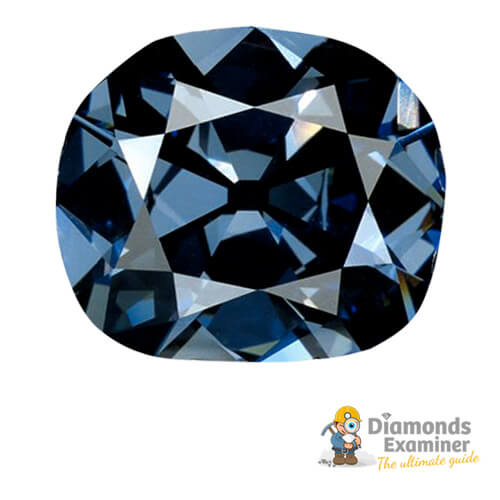
Hortensia diamond
The Hortensia Diamond takes the name after Hortense de Beauharnais, the Queen consort of King Louis Bonaparte, a younger brother of Napoleon, who gave him the rule of Holland in 1806 (Hortense was, incidentally, also the natural daughter of Josephine, Empress to Napoleon, and thereby Napoleon’s adoptive daughter, which certainly made family lunches a bit awkward).
Click here to tweet the Hortensia diamond and its picture!
It is a 20-carat peach-coloured diamond, cut into a singular pentagonal shape, only slightly marred by a very fine crack going from its outer edge to the tip of its pavilion (culet). The diamond shared the fate of the French Blue and Sancy not once, but twice, being stolen in 1792, and then again in 1830. Today it resides at the Louvre, next to the Sancy and Regent.
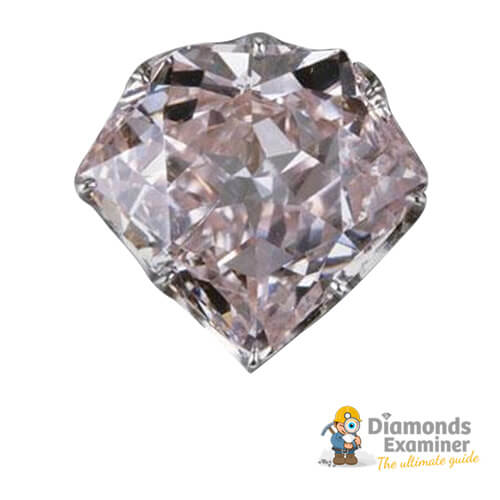
Incomparable diamond
The aptly named Incomparable Diamond is a particularly large brown diamond, weighing in at 407.48 carats. Much like the majority of brown diamonds, the Incomparable Diamond originated in Africa, specifically Zaire (modern day Democratic Republic of the Congo). The rough stone was found in 1984 by a young girl playing around a pile of rubble from the nearby MIBA Mine.
Click here to tweet the Incomparable diamond and its picture!
It weighed some 890 carats, and was originally planned to be cut so that it becomes the largest faceted gemstone. However, the plan was later changed so that the Incomparable was almost halved in size to reduce the number of internal faults.
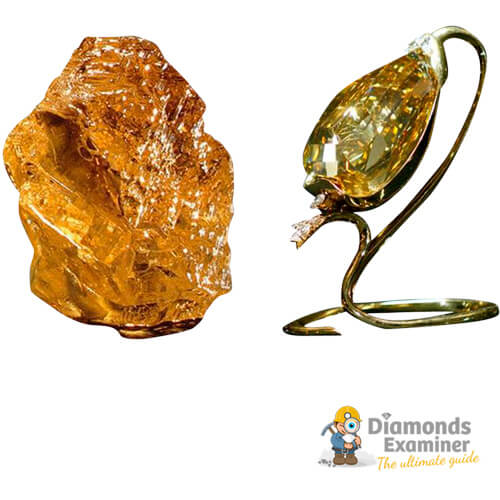
Jacob diamond
The Jacob Diamond is a 184.5-carat cushion-cut colourless diamond of exquisite beauty and doubtful origin. Most experts believe it is the same as the Victoria Diamond, which had been found somewhere in South Africa (most likely at the Jagersfontein mine or nearby) and came to Britain through some unusual channels in 1884.
Click here to tweet the Jacob diamond and its picture!
The rough stone weighed in at 457.5 carats and sported a bluish tinge, still present in the cut gem. It takes its name after A. M. Jacob, who mediated the troubled transaction between the then owners – Syndicate of Hatton Garden and Mahboob Ali Pasha, the 6th Nizam of Hyderabad. Today, the Jacob Diamond is in the possession of the Government of India, and makes a permanent exhibit at the Salar Jung Museum in Hyderabad.
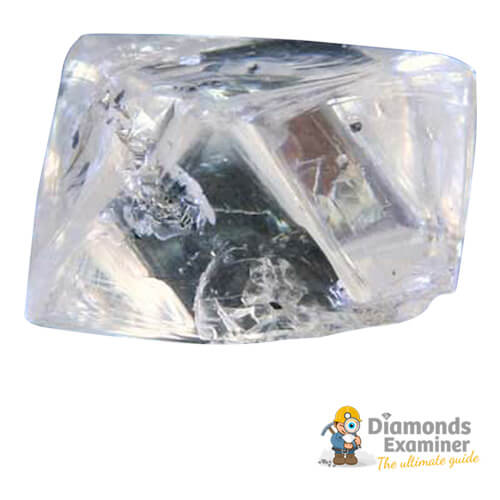
The Jane Seymour diamond
The Jane Seymour is a one-of-a-kind fancy vivid blue diamond, named in honour of the prolific British-American actress. The stone itself weighs in at 2.08 carats and sports a cushion cut. It is set in an 18-carat platinum ring plated with rose gold, framed by floral motifs on either side of it.
Click here to tweet the The Jane Seymour diamond and its picture!
The diva did wear it on at least one occasion, when she was presented with it in 2016, but it is not the actual owner. That would be the World Of Diamonds Group, who sourced the rough stone from Russia, and announced the sale in July 2016, as a part of a luxurious 8-hour experience.
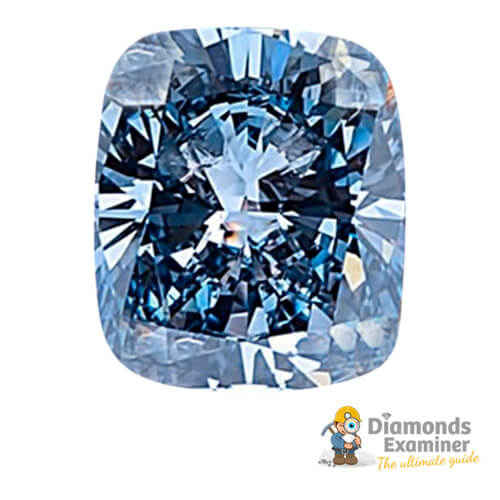
Jones diamond
The story about the Jones Diamond is an unusual one, and it has surely been printed in more than one paper in the Believe-it-or-not section. The rough stone was discovered by the Jones family, or one of the members, at any rate (hence the name) in 1928. The 34.48 gem sat through the Great Depression in a cigar box, until William P. Jones re-discovered it, as it were, and, his curiosity piqued, decided to find out more about it.
Click here to tweet the Jones diamond and its picture!
He brought it to a professor at Virginia Tech, who authenticated it as an unusually large alluvial diamond. The Joneses were, obviously, overjoyed, but not rash, so the diamond was not sold until 1984, when it was auctioned off to an undisclosed buyer for a matching price.
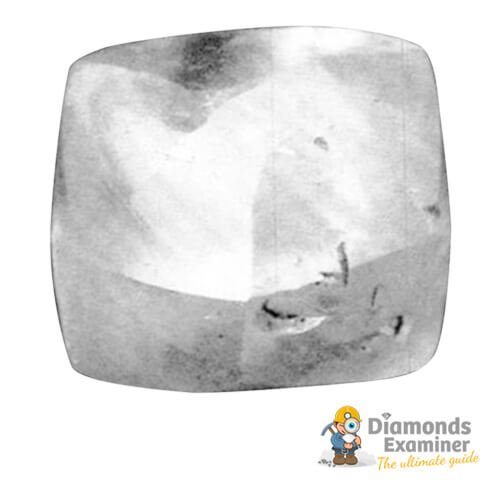
Jubilee diamond
The Jubilee Diamond (not to be confused with the Golden Jubilee Diamond) is an exquisite colourless diamond weighing in at 245.53 carats, cut into a standard cushion shape. The rough stone was unearthed at the Jagersfontein Mine in South Africa in 1895 (mere two years after the Excelsior), and named the Reitz Diamond, after F. W. Reitz.
Click here to tweet the Jubilee diamond and its picture!
The stone was bought by a consortium and sent to Amsterdam for cutting (when a smaller 13.34-carat piece was cut from it into a pear-shaped gem, which later ended up in the possession of Dom Carlos I of Portugal). It was renamed to the Jubilee in honour of Queen Victoria and her diamond jubilee on the throne (1897). Interestingly enough, the Queen never owned or wore the diamond.
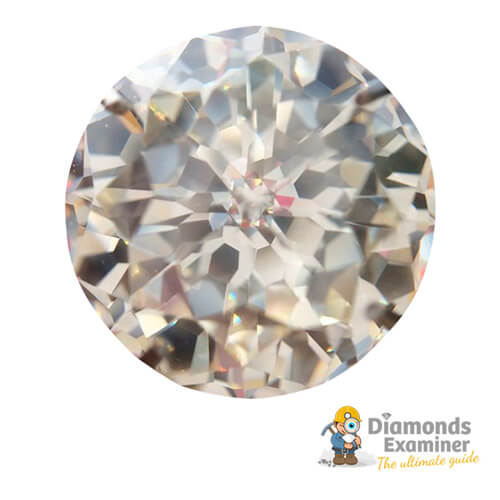
Lesedi La Rona diamond
The Lesedi la Rona, in addition to being a mouthful to name, is also the third largest diamond to be discovered (if we count the Sergio, which is a carbonado rather than a gem). Weighing in at an impressive 1,111 carats, the Lesedi la Rona is a colourless diamond sourced from the Karowe Mine in Botswana, and was originally named simply the Karowe AK6 after the mine.
Click here to tweet the Lesedi La Rona diamond and its picture!
In 2016, however, there was a competition announced by Lucara Diamond, owner of the mine (and the diamond), to find a suitable name. The competition was open to all the citizens of Botswana. The name chosen means “Our Light” in Tswana, and it seems an apt name given the brilliance of the stone and its significance to the people of Botswana.
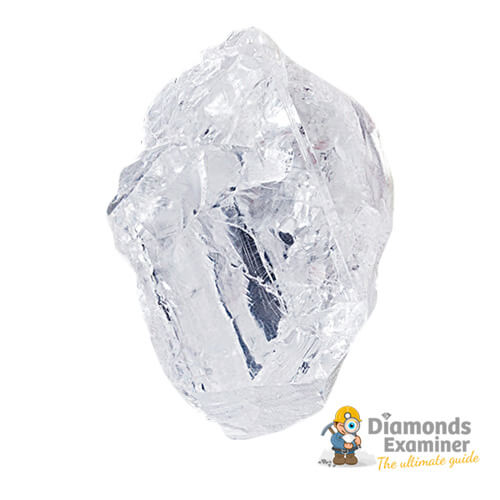
Kazanjian Red diamond
The Kazanjian Red Diamond is a 5.05 emerald-cut diamond of an exquisite blood-red colour that made it be mistaken for a ruby on at least one occasion. It is the second largest stone of that colour, sitting pretty between the 5.11-carat Moussaieff and the 5.02-carat DeYoung – this makes the trio the only three red diamonds exceeding 5 carats, meaning they are a rare, select few of an already rare type.
Click here to tweet the Kazanjian Red diamond and its picture!
The Kazanjian Red was mined somewhere in the 1920s in Lichtenberg, South Africa, and mistaken for a piece of bort weighing about 35 carats. Today it is in possession the Kazanjian Brothers, and touring the world raising charity.
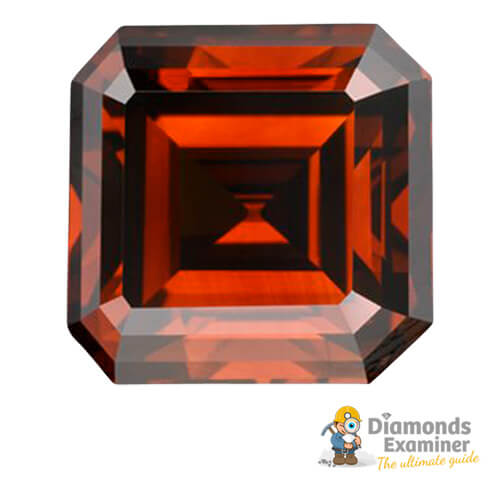
Koh-i-Noor diamond
Legend says that whoever holds the Koh-i-Noor (Mountain of Light in Persian) will rule the world. Seeing the diamond makes the saying all the more believable. It is a colourless 105.602-carat, and the unique oval shape it sports today is its second cut. It originally weighed 186 carats, and the raw stone was purportedly 793 carats when discovered, most likely, in the Kollur Mine in Andhra Pradesh.
Click here to tweet the Koh-i-Noor diamond and its picture!
The diamond has a long and bloody history, starting, according to some, as far back as 6,000 BC, though the first recorded owners were the Kakatiya Dynasty of South India. Today, the diamond is part of the Crown Jewels of England, and sits pretty in the Queen Mother’s Crown.
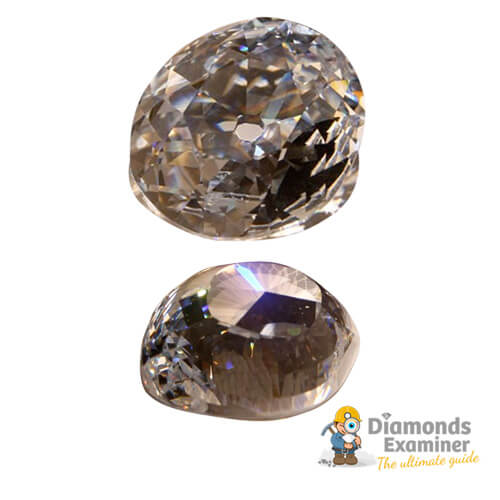
Koi diamond
The Koi Diamond is one of the most unique pieces in the world of diamonds. Weighing in at just over 32 carats, the pear-shaped stone is mostly white and orange, with splotches of light yellow, black and dark blue. It was unearthed in the Republic of Congo somewhere in the early 2000s and originally listed for industrial use.
Click here to tweet the Koi diamond and its picture!
Luckily, almost at the last minute, the gem caught the eye of a diamond cutter (wishing to stay anonymous) who envisioned a koi fish (hence the name). He acted on his vision, inadvertently opening up a potentially amazing and creative way to appreciate diamonds.
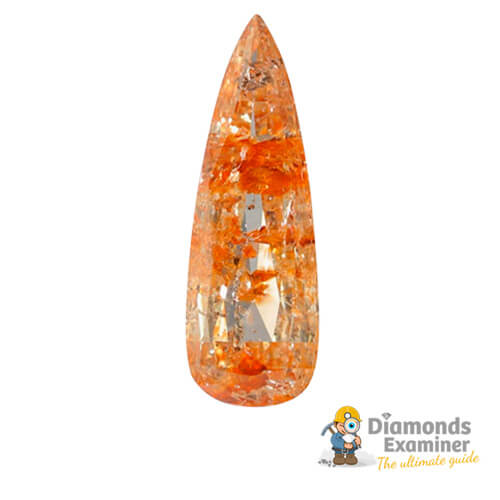
Lesotho Brown diamond
The Lesotho Brown (not to be confused with the Lesotho Promise) was a raw 601-carat pale brown diamond found at the Lets’eng mine in Lesotho (hence the name). Discovered purely by accident in 1967, it was the largest ever diamond to be discovered by a woman (until the discovery of the Lesotho Promise), and it proved to be a godsend for the discoverer and her husband, who walked for four days to reach a reputable diamond merchant.
Click here to tweet the Lesotho Brown diamond and its picture!
It was eventually cut into 18 pieces, with a combined weight of 252.4 carats, the largest of which being the 71.73-carat Lesotho I. However, the most famous piece would certainly be the 40.42-carat Lesotho III, which is a marquise-cut gem mounted on an engagement ring that Aristotle Onassis gifted to Jackie Kennedy.
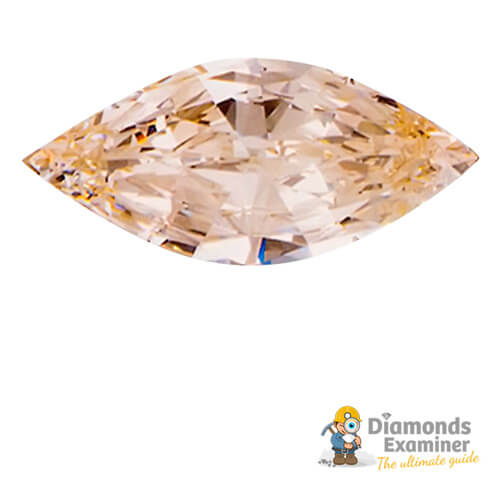
Lesotho Promise diamond
The Lesotho Promise (not to be confused with the Lesotho Brown) is a large white diamond discovered in 2006 at the Lets’eng mine in the Kingdom of Lesotho, almost four decades after the equally famed Lesotho Brown. Interestingly enough, both diamonds were discovered by women.
Click here to tweet the Lesotho Promise diamond and its picture!
Weighing in at 603 carats, the Promise even beats the Brown by two carats, which, incidentally, makes it the largest diamond found at the mine and 15th largest overall, as well as the 10th largest of its colouration. It was cut into twenty-six stones of various sizes (totalling 224 carats) that were unveiled in 2007. The largest of these is the 75-carat pear-cut diamond, while the smallest is the 0.55-carat round-cut brilliant, both of which are in possession of the South African Diamond Corporation.
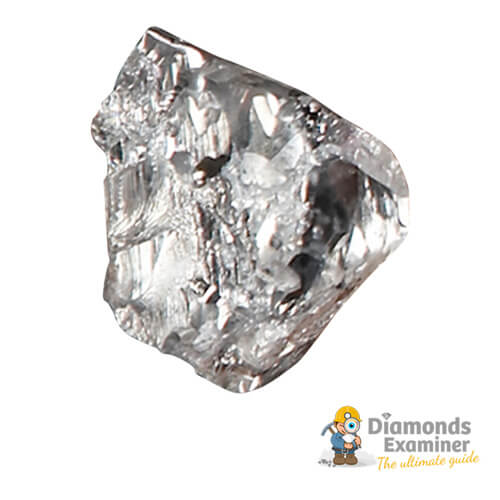
Martian Pink diamond
The Martian Pink is an exquisite fancy intense pink diamond, the largest one of its kind to be auctioned off, and the second largest pink overall (right after the 23.56-carat Williamson Pink).
Click here to tweet the Martian Pink diamond and its picture!
It was cut and polished in 1976, the same year NASA launched their very first mission to Mars, which accounts for the name, an obvious homage to the planet’s colour (the idea came from Ronald Winston, the son of the famous New York jeweller Harry Winston). The stone itself weighs in at 12.04 carats and features a round brilliant cut. It fetched a price of $17,400,000 in 2012, exceeding the expected maximum by well over 5 million.
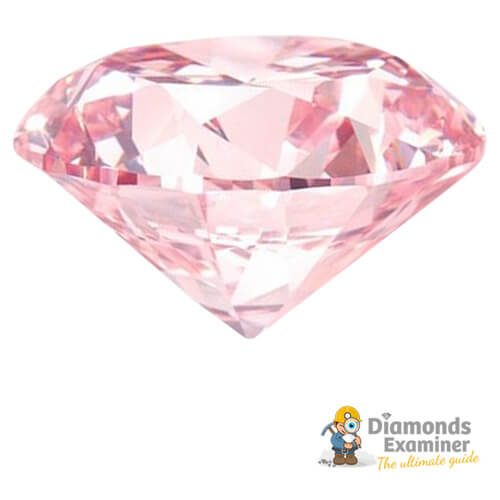
Millennium Star diamond
The Millennium Star is the fifth largest D-colour (purest colourless) diamond in the world. The raw stone originally weighed in at an auspicious 777 carats upon discovery, until being cut to the current 203.04-carat pear shape. It was discovered in Zaire (the Democratic Republic of the Congo) sometime in 1990, although it remained unnamed until 1999, or until its revelation as the centrepiece of the Millennium Collection of diamonds at the Millennium Dome.
Click here to tweet the Millennium Star diamond and its picture!
Interestingly enough, the Millennium Star is claimed to be the sole diamond in the world, irrespective of the clarity, that is flawless both on the inside and on the outside. Understandably, this makes the task of estimating the value an inordinately difficult one.
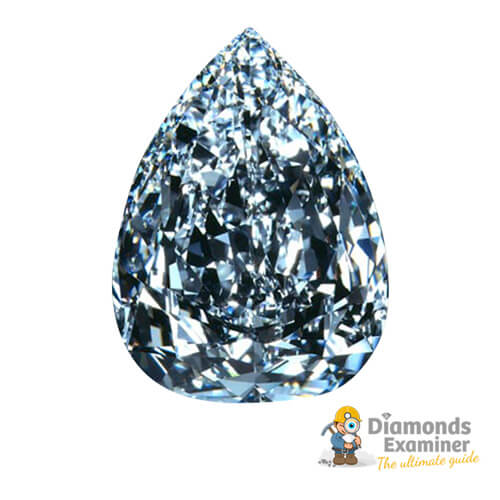
Moon of Baroda diamond
The Moon of Baroda has a long and storied history spanning hundreds of years, and like any such diamond, it has an interesting curse attached to it. The one here is that the diamond will bring bad luck to its wearer if it crosses the sea. The stone itself is a 24.05-carat of canary yellow, cut into a pear shape.
Click here to tweet the Moon of Baroda diamond and its picture!
It was unearthed in Baroda (Vadodara) in India as a 25.95-carat raw diamond, and had belonged to the Gaekwada Maharajas for almost half a millennium before finding its way to Maria Theresa of Austria. It’s noted for being worn by Marilyn Monroe for the shooting of the film Gentlemen Prefer Blondes.
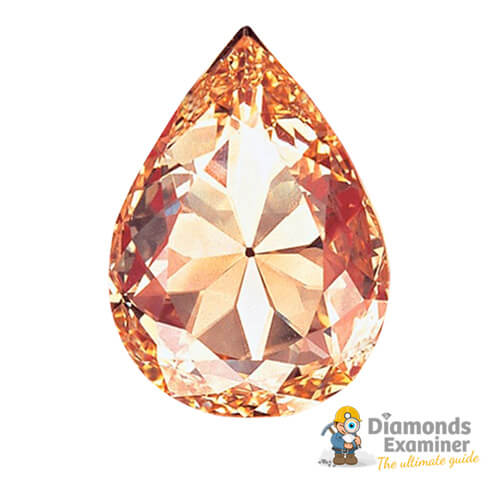
Moussaieff Red diamond
The Moussaieff Diamond is an internally flawless diamond weighing in at 5.11 carats. This makes the Moussaieff Red the single largest red diamond, with the 5.05-carat Kazanjian Red and the 5.02-carat DeYoung Red trailing close behind. It was found by a farmer in Brazil sometime during the 1990s, purely by accident.
Click here to tweet the Moussaieff Red diamond and its picture!
Weighing in at 13.90 carats, the rough stone was later cut into the trilliant-cut blood-red gem, and set into a ring. The stone was originally known as the Red Shield, while being in possession of the William Goldberg Diamond Company, before being sold to the Moussaieff Jewellers Ltd, which accounts for its current name.
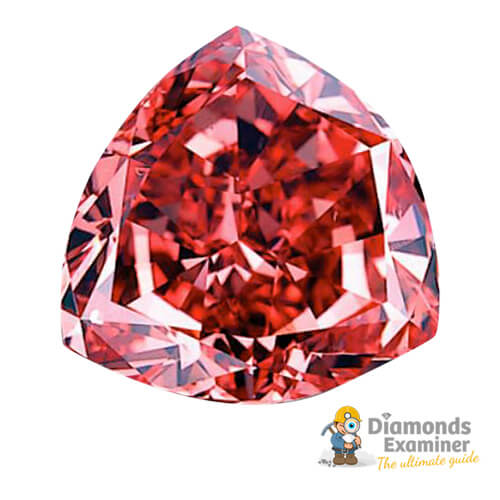
Nassak diamond
The Nassak Diamond, also variously known as the Nasaac Diamond or the Eye of the Idol is an exquisite blue-white emerald-cut diamond weighing in at 43.38 carats. It was discovered in India sometime during the 15th century at the Amaragiri Mine in Mahbubnagar, and incorporated into the Shivalinga at the renowned Trimbakeshwar temple in the proximity of ashik.
Click here to tweet the Nassak diamond and its picture!
It was originally a mogul-cut diamond weighing some 89.75 carats (while still being known as the Eye of the Idol), but was reduced to 78.625 carats after its first recut (1818). The stone received its final emerald form in Paris in 1940, and it is believed to currently be a part of a private exhibit in Lebanon.
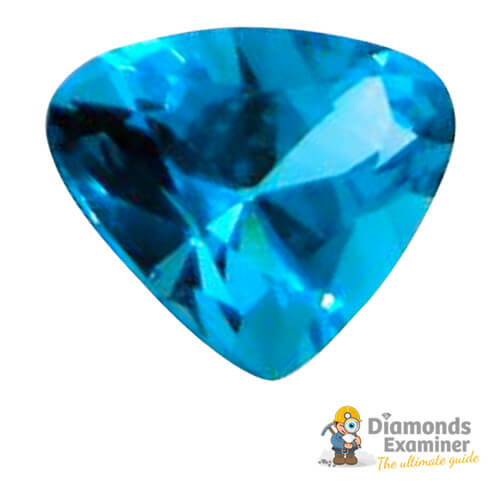
Nizam diamond
The Nizam Diamond is a famed lost diamond, and all the information we have about it comes from tales and hear-say. It takes its name after the last Nizam of Hyderabad. There are no photographs, historical documents or other hard evidence, but that it existed is beyond the shadow of a doubt.
Click here to tweet the Nizam diamond and its picture!
It was one of the most famous diamonds of the 19th century, weighing in at about 340 carats, and sporting an almond cut. The stone was colourless, and more likely than not mined at the Kollur Mine in Andhra Pradesh (just as the Great Mogul, Koh-i-Noor, Dresden Green and a number of other equally storied diamonds).
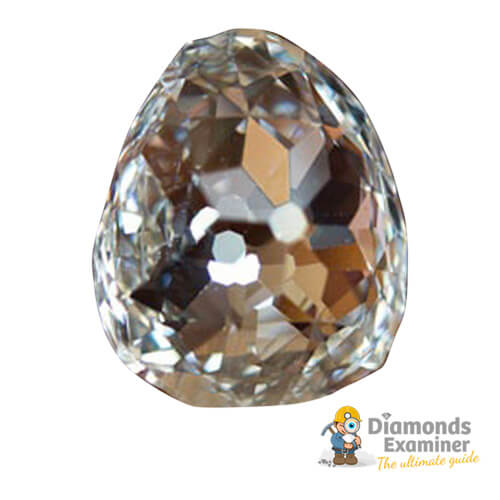
Noor-ol-Ain diamond
The very aptly named Noor-ul-Ain Diamond (Persian and Arabic for “the light of the eye”) is an approximately 60-carat pink diamond, one of the largest such diamonds in the world. The stone probably came from the Golconda (Kollur) mines in Andhra Pradesh, and had originally been a part of the famed Great Table diamond that belonged to Shah Jahan.
Click here to tweet the Noor-ol-Ain diamond and its picture!
The Table diamond had been plundered by Nadir Shah of Persia and disappeared sometime after his assassination. It is believed the diamond was split into two unequal halves, the bigger being the Daria-i-Noor, while the Noor-ul-Ain makes the smaller half. Today, the diamond is part of the Iranian Crown Jewels, sitting in a tiara bearing the same name.
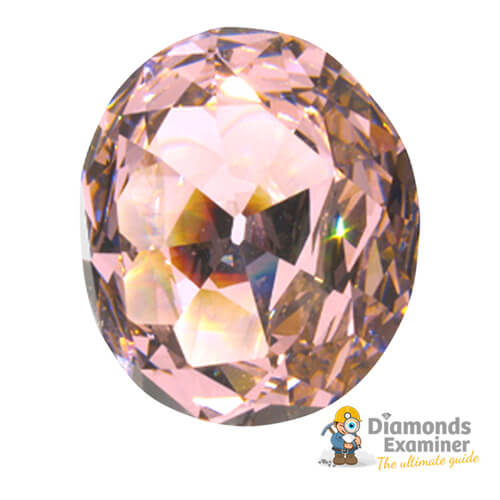
Ocean Dream diamond
Carat for carat, the Ocean Dream Diamond is probably one of the most expensive coloured diamonds in the world, although its exceptionally unique deep blue-green hue makes it all but impossible to make an estimate. It is the first and largest of only two diamonds of this colour (the other being the 1.6-carat Ocean Paradise). It is fancy trillion-cut (triangular) stone weighing in at 5.51 carats. Upon discovery, the stone weighed 11.27 carats, it is uncertain where it was found (most likely the Central African Republic).
Click here to tweet the Ocean Dream diamond and its picture!
The diamond was on display along the Moussaieff Red, the Alnatt, the Heart of Eternity and the Millennium Star in 2003 as part of De Beers exhibition titled The Splendour of Diamonds. It is currently owned by the Cora Diamond Corporation.
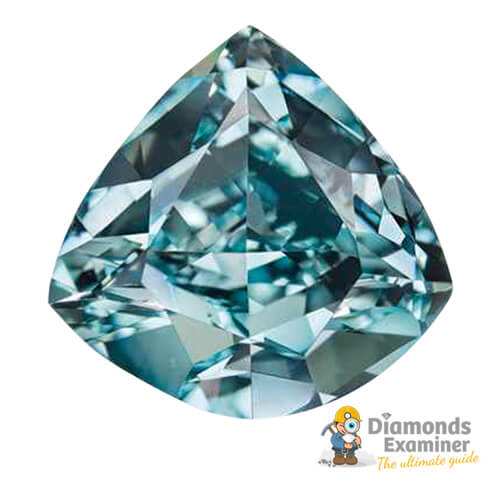
Oppenheimer Blue diamond
The Oppenheimer Blue Diamond (not to be confused with the Oppenheimer Diamond) is a fancy vivid blue, rectangle-cut diamond weighing in at 14.62 carats (slightly re-cut from the original 14.71 carats). The stone set the record for the most expensive diamond ever sold (successfully) at an auction, having been sold (to an undisclosed telephone bidder) for an amazing $50.6 million in 2016.
Click here to tweet the Oppenheimer Blue diamond and its picture!
It takes its name after a previous owner, Sir Phillip Oppenheimer, of the Oppenheimers that used to control the De Beers Mining Company (up until 2012). The stone used to sit on a Verdura mount before being slightly re-touched sometime after 1999 and set on its current platinum ring.
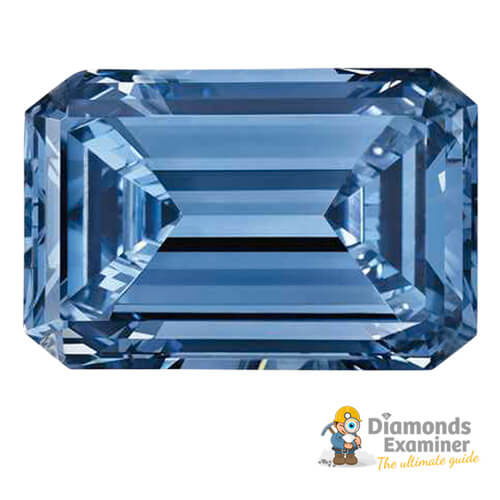
Oppenheimer diamond
The Oppenheimer Diamond (not to be confused with the Oppenheimer Blue Diamond) is a rough 253.7-carat yellow diamond, formed almost perfectly into an octahedral natural crystal. This makes it the second largest of its kind, right after the 616-carat Kimberley Octahedron (aka the 616 Diamond). It’s also the second largest yellow diamond, trailing after the 407.48-carat Incomparable Diamond.
Click here to tweet the Oppenheimer diamond and its picture!
The stone was unearthed in 1964, at the Dutoitspan mine in South Africa, and has been purchased very soon after by the famous New York jeweller, Harry Winston, who decided to preserve it as is. Winston named the diamond the Oppenheimer in memory of Sir Ernest Oppenheimer (of the De Beers Oppenheimers), and later donated it to the Smithsonian, where it resides to this date.
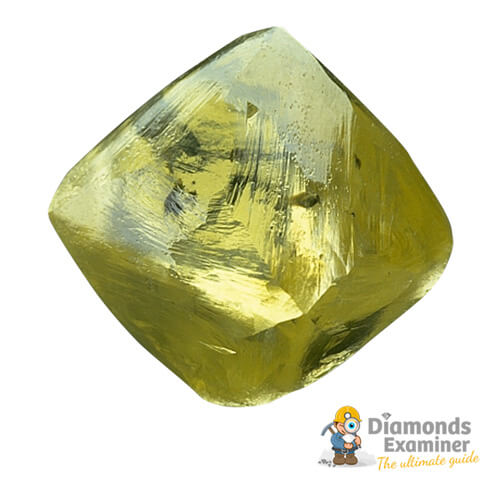
Orlov diamond
The Orlov Diamond, variously spelled as Orloff (not to be confused with the Black Orlov) is a colourless rose-cut diamond, weighing in at 189.62 carats. It is often described as resembling an egg in shape and size. It is believed that the stone was mined at the Golconda mines in India, and that it was mounted as one of the eyes of an idol at the Ranganatha Temple before being stolen somewhere in the mid-18th century.
Click here to tweet the Orlov diamond and its picture!
The stone takes the name after count Orlov, one of purported lovers of the Empress Catherine II (the Great) of Russia (the count is said to have been given a marble palace in St. Petersburg in return). It was named thus by the Empress herself and set in the Imperial Sceptre, where it resides to this day.
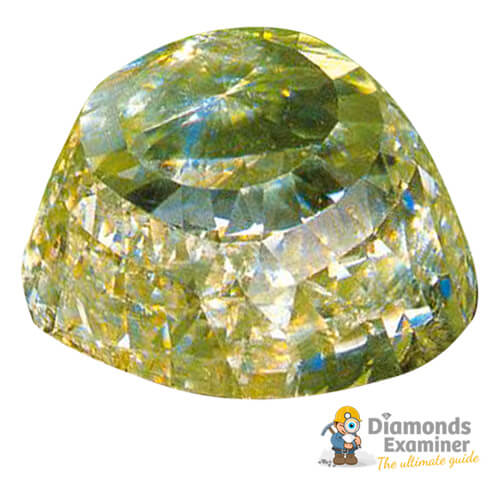
Paragon diamond
The very aptly named Paragon Diamond is a flawless D-colour diamond of extraordinary clarity and brilliance, with no inclusions or faults. Weighing in at 137.82 carats, this is the tenth largest white diamond in the world, and the largest flawless diamond – a paragon indeed. The rough stone was unearthed in Brazil sometime during the 1990s, and it immediately garnered much attention.
Click here to tweet the Paragon diamond and its picture!
The precise location and circumstances of its discovery are unknown, but we do know that its current owners are the Graff Diamond Company. The gem was cut into a unique 7-sided kite-shield shape, and set into an equally extraordinary 190.27-carat diamond necklace, to which it gives the name.
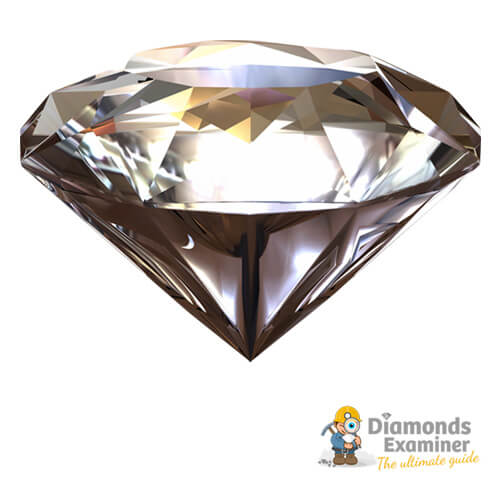
Pastor Emmanuel Momoh's diamond
The Pastor Emmanuel Momoh’s Diamond, as the rough stone has unofficially been named, is a 706-carat alluvial diamond unearthed in Sierra Leone (Kono region, to be precise) in 2017. This accounts for its other (also unofficial) name – the Sierra Leone Diamond. Incidentally, this is the second largest diamond discovered in Sierra Leone, right after the 968.9-carat Sierra Leone Promise (1972).
Click here to tweet the Pastor Emmanuel Momoh's diamond and its picture!
It was discovered by the eponymous pastor while he was sifting through the sediment. The good pastor is an artisanal miner rather than a professional diamond hunter, which makes the discovery all the more fortunate and impressive. The diamond has been described as the size of a hockey puck, and having a yellow tinge to it.
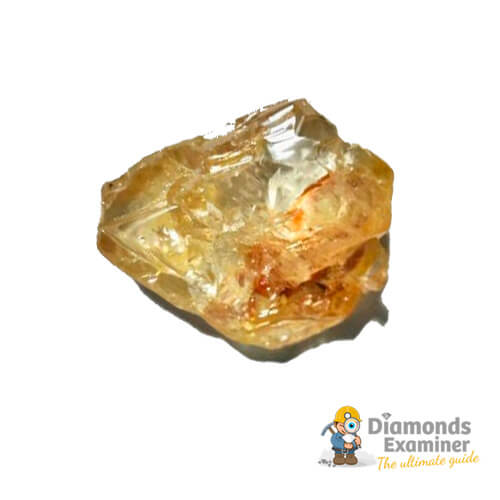
Pigot diamond
The Pigot Diamond is a lost 47.38-carat oval-cut diamond, mined, in all likelihood, at the Golconda Mines in Andhra Pradesh. It takes its name after its first recorded owner, Sir George Pigot, who obtained it during his stint as Governor of Madras. The stone is also variously known as the Lottery Diamond or the Great Lottery Diamond for the way it was sold in 1801 (the lucky ticket had been jointly bought by four individuals who later sold it in 1802).
Click here to tweet the Pigot diamond and its picture!
It is known that the stone was subsequently offered to any and all crowned heads of Europe, but there were no takers. Ultimately, the then Khedive of Egypt purchased the diamond in 1820s/1830s as a gift to his Sultan. This is the point where the stone exits the scene and enters the realm of speculation and contradiction.
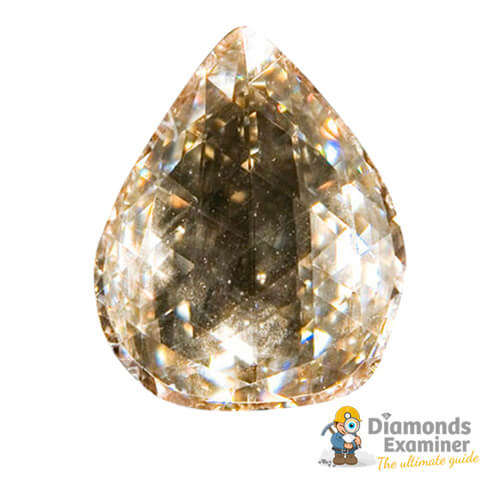
Pink Star diamond
The Pink Star Diamond, formerly known as the Steinmetz Pink (after one of the previous owners, the Steinmetz Group), is the single largest fancy vivid pink diamond in the world, weighing in at 59.60 carats. The rough stone weighed 132.50 carats upon being unearthed in a De Beers mine in South Africa (in 1999).
Click here to tweet the Pink Star diamond and its picture!
The faceted stone was unveiled in 2003 as a part of the Splendour of Diamonds Exhibition at the Smithsonian, where it was worn by the actress Jenna Elfman (as a pendant set in a necklace). In 2013, the diamond was sold at a Sotheby’s auction to a private buyer for $83,200,000, breaking all the records for diamonds sold off at auctions. However, the buyer could not afford the price agreed, so the sale was reneged.
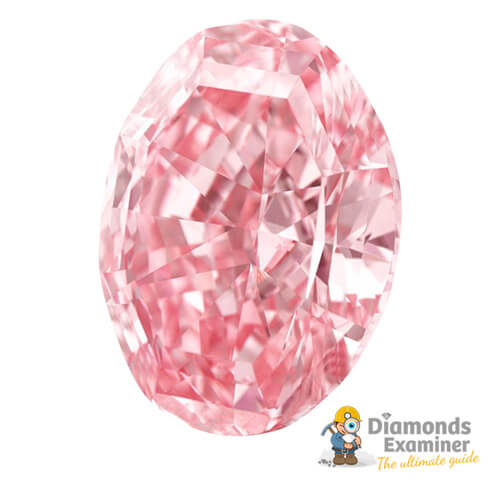
Polar Star diamond
The Polar Star Diamond is a 41.28-carat oval-cut diamond of exquisite symmetry in the cut. In fact, it is said that the diamond is so perfectly shaped that it is able to balance on its cullet. The name is, obviously, a reference to Polaris, and it certainly does it credit. It is not known how or where exactly the rough diamond was found, though experts agree it originates from the Golconda Mines in Andhra Pradesh.
Click here to tweet the Polar Star diamond and its picture!
The first recorded owner of the diamond was the eldest brother of Napoleon Bonaparte, Joseph, who later sold it to a noble family from Russia, which was reported to have had family connections with Rasputin. After changing hands many times, the stone came into private hands in 1980, and has been rarely seen since.
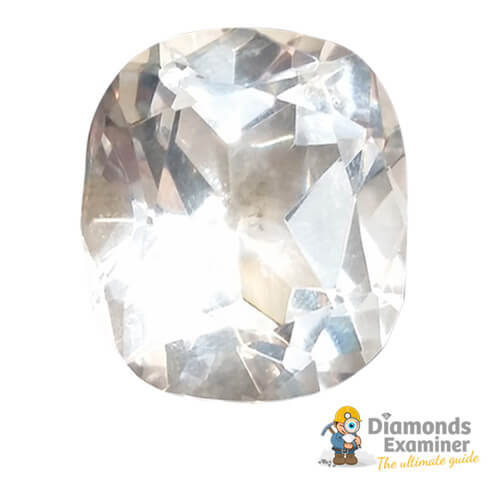
Portuguese diamond
The Portuguese Diamond is an essentially colourless diamond of exceptional clarity that exudes a certain pale fluorescence under daylight, and a strong fluorescence under UV light. It is an octagonal-cut stone weighing in at 127.01 carats. It was named by Harry Winston, who then traded it in for about 3,800 carats’ worth of smaller diamonds with the Smithsonian, where it currently resides.
Click here to tweet the Portuguese diamond and its picture!
The rumours state that the stone was mined in Brazil sometime during the 18th century, as well as that it used to be a part of the Crown Jewels of Portugal, but there are no historic documents to support this. A more likely (and better documented) version puts it at the Premier Mine in South Africa and 20th century.
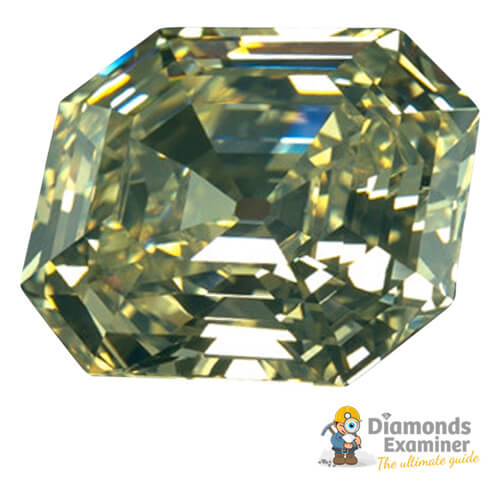
Premier Rose diamond
The Premiere Rose was an internally flawless D-colour raw diamond weighing in at 353.90 carats. It was sourced from the Premiere Mine in South Africa, which accounts for the first half of the name. The latter half comes from Rose Mouw, wife of the famous diamond cutter Jacob Mouw.
Click here to tweet the Premier Rose diamond and its picture!
The stone was cut into three pieces, the 137.02-carat Premier Rose (variously known as the Big Rose), and 31.48-carat Little Rose, as well as the 2.11-carat Baby Rose. The largest of these inherited the name Premiere Rose, and is today the third largest pear-cut diamond of this colour and the eleventh largest diamond of this colour overall.
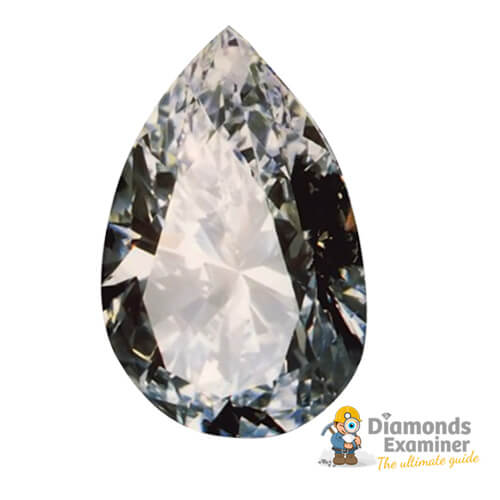
Princie diamond
The Princie Diamond is a cushion-cut fancy intense pink diamond weighing in at 34.65 carats. It was mined probably in the 18th century, at the storied Golconda Mines of Andhra Pradesh, much like the rest of the famous pink diamonds from India, to wit the fabled Koh-i-Noor, Daria-i-Noor and Noor-ul-Ain, as well as the Pink Star.
Click here to tweet the Princie diamond and its picture!
The story behind the name is somewhat prosaic, but worth hearing – it was the nickname of Sita Devi, the 14-year old son of the Maharani of Baroda. When the Nizam of Hyderabad had it auctioned at Sotheby’s in 1960, both the mother and son were guests of honour. Today, the stone is in private hands at an undisclosed location, having been sold to an anonymous telephone bidder.
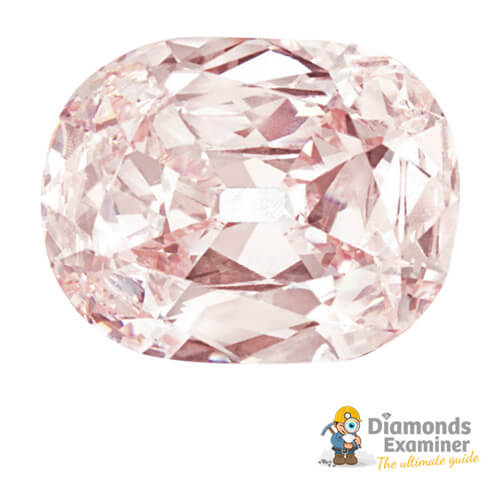
Pumpkin diamond
The very aptly named Pumpkin Diamond is fancy vivid orange cushion-cut stone weighing in at 5.54 carats. Granted, this may not seem as much, but it is the largest stone of this colour, faceted or raw. The diamond was named by Ronald Winston, son of Harry Winston, who bought it in 1997 just a day before Halloween. Inspired by the approaching holiday and the diamond’s unique colour, Mr Winston probably did not have any problems finding the right name for it.
Click here to tweet the Pumpkin diamond and its picture!
The stone was unearthed in South Africa in 1997 as an 11-carat rough, that much is known, but the exact mine or circumstances of its discovery are a matter of much debate. Today, it sits pretty mounted in a ring and flanked on either side by two smaller, colourless diamonds. The ring was famously worn by Halle Berry at the Academy Award in 2002.
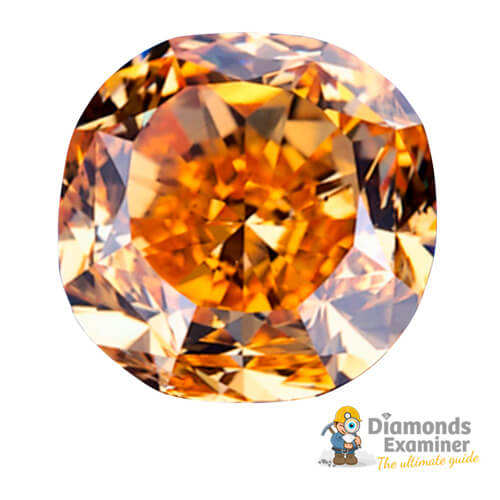
Raven diamond
When it comes to the Raven Diamond, there is a veritable paucity of information anywhere you look. It is known that this is a trilliant cut, with slightly curved sides, weighing in at 12.78 carats, and that the diamond’s black colour very much lives up to the name. Granted, it’s trailing well behind the Spirit of de Grisogono and the Gruosi Diamonds, and even the Black Orlov and Amsterdam Diamonds on the list of the largest black diamonds, but 12.78 is still substantial.
Click here to tweet the Raven diamond and its picture!
Of the stone’s point of origin or circumstances in which it was found there is no information, much like its current exact whereabouts. The latest piece of news states that it was purchased by a private collector from upstate New York in 2011, but since then, not a peep.
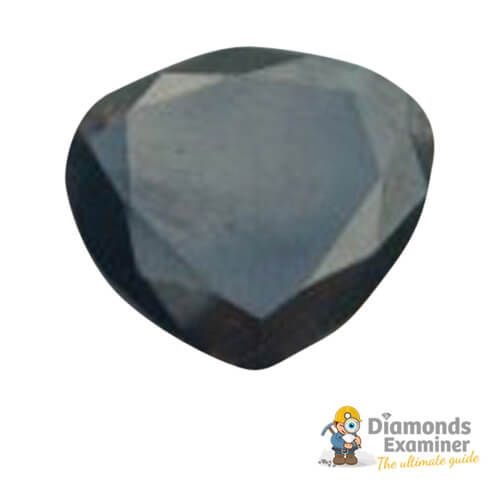
Regent diamond
The Regent Diamond is a colourless cushion-cut diamond weighing in at 140.64 carats. It is a D-colour stone, though with a slight bluish tinge, which indicates it originates from one of the famed Golconda mines in Andhra Pradesh. The legend says it was discovered by a slave who smuggled the 410-carat stone out of the mine and sold it to an Englishman for a safe passage to another land and half of the sale profits.
Click here to tweet the Regent diamond and its picture!
After changing many hands, the stone came into possession of Phillip II, Duke of Orléans and Regent of France for King Louis XV. Today, the Regent sits pretty in a Greek diadem as part of the French Royal Jewels in the vaults at the Louvre.
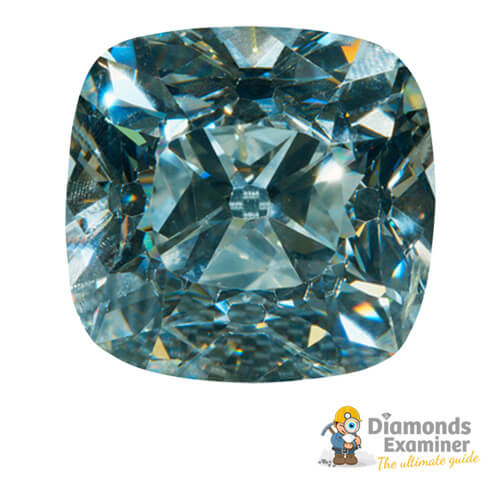
Sancy diamond
The Sancy Diamond (which is not to be confused with the Beau Sancy) is a 55.23-carat modified shield-cut diamond of a unique pale yellow hue, reputedly having once belonged to the Mughals. Interestingly enough, the stone features no pavilion, but rather a pair of crowns. Much like the Beau Sancy, the Sancy is named after Nicolas de Harlay, Lord of Sancy, one of its previous owners.
Click here to tweet the Sancy diamond and its picture!
However, the exact manner in which the good lord obtained the diamond is disputed. As of this writing, the Sancy resides at the Louvre (has been since 1978), alongside the equally storied Regent and Hortensia diamonds.
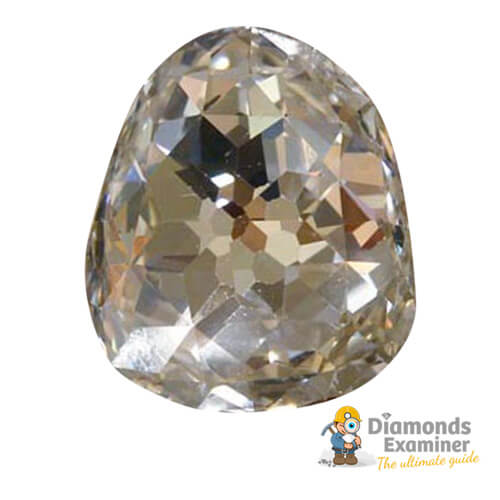
Sergio diamond
Sergio, or Carbonado do Sergio as it is originally known in Portuguese, is a large black diamond weighing in at an impressive 3,167 carats (having an advantage of 61 carats over the Cullinan). This makes it not only the largest carbonado (only the toughest form of natural diamond) but also the largest diamond discovered. It was unearthed in the State of Bahia, Brazil, all the way back in 1895.
Click here to tweet the Sergio diamond and its picture!
Experts believe that the Sergio is of extra-terrestrial origin, most likely meteoritic (as a matter of fact, this may be applied to the carbonados as a whole). As of yet, the Sergio remains uncut.
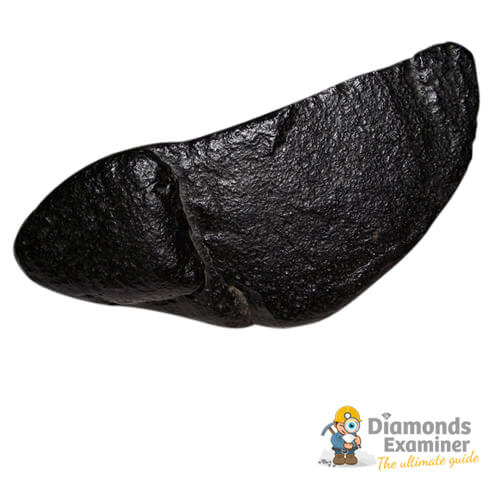
Shah diamond
The Shah Diamond (which is not to be confused with the Akbar Shah Diamond) is a colourless diamond with a slight yellow tinge of unique cut (experts often compare it to a coffin, perhaps a bit too poetically). It is a bar-cut stone weighing in at 88.70 carats (though this was after the re-cut, the faceted stone originally weighed 95 carats, reportedly).
Click here to tweet the Shah diamond and its picture!
It features engravings reading the names of three of its previous owners, making it a sort of document unto itself that the rough stone was unearthed at the Golconda mines sometime during the 15th century in what is the modern-day Andhra Pradesh, and is currently kept in the Kremlin (having been given by the Persian Government to Tsar Nicholas I as appeasement for the assassination of Alexander Griboyedov, Russian ambassador to Persia in 1829).
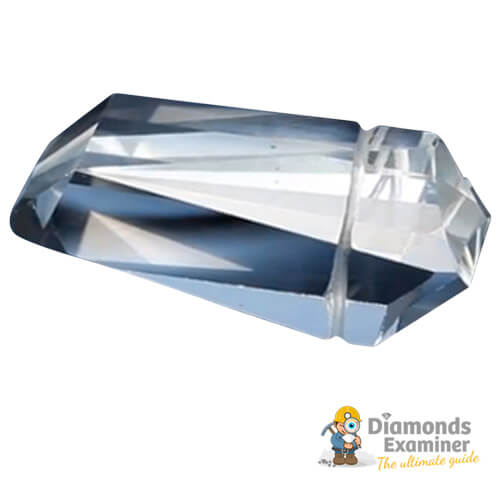
Skull Star diamond
The Skull Star diamond is an internally flawless pale pink diamond weighing in at 52.40 carats. This pear-cut stone is mounted on the forehead of a platinum cast of a real human skull, surrounded by fourteen equally flawless white diamonds, also cut into a pear-shape, as if it were the third eye.
Click here to tweet the Skull Star diamond and its picture!
This accounts for only fifteen of 8,601 flawless, ethically-sourced diamonds (totalling 1,016.18 carats in weight) that Damien Hirst used to encrust the platinum cast. The sculpture, named For the Love of God, was the result of collaboration of Hirst and Bentley & Skinner, and it was meant to serve as an ad for the company, as well as a memento mori piece and Hirst’s pièce de résistance.
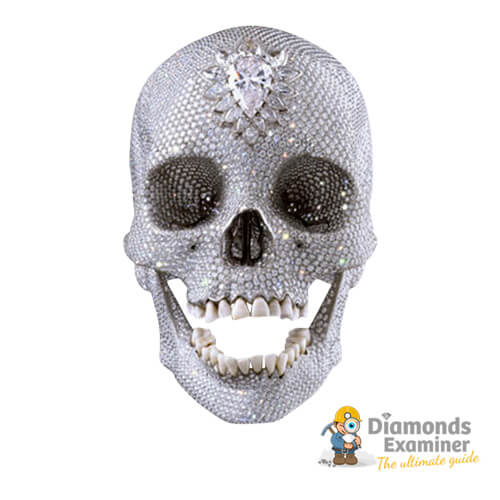
Spirit of de Grisogono diamond
The Spirit of de Grisogono is an exquisite mogul-cut black diamond that takes its name after the company that cut it (founded by the famous Fawaz Gruosi, a man who singlehandedly has done more to popularize black diamonds than anyone else). Incidentally, the company also cut the Gruosi Diamond, a large heart-shaped black diamond of Indian provenance.
Click here to tweet the Spirit of de Grisogono diamond and its picture!
Weighing in at a substantial 312.24 carats, the Spirit is the single largest faceted diamond of its colour, second largest black diamond overall, and the 19th largest diamond of any colour (as of 2017). The raw stone weighed some 587 carats upon being discovered in the Central African Republic sometime during the 1980s, though the exact time and place are unknown.
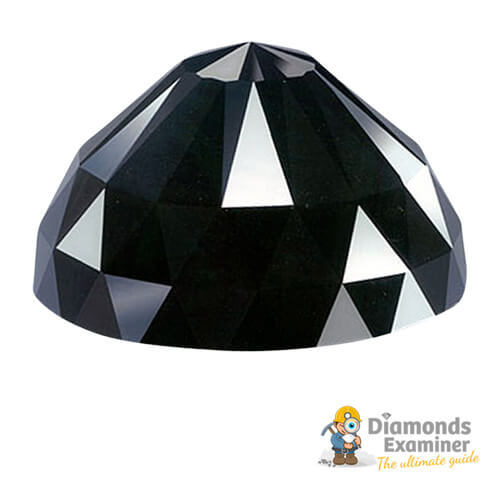
Spoonmaker's diamond
The Spoonmaker’s Diamond, also known in Turkish as the Kasikci Elmasi (literally meaning the same), is an 86-carat pear-cut diamond of a pure colourless appearance. The stone is of uncertain provenance – according to one version, it was underhandedly bought by a jeweller off a fisherman who had no clue what he had found.
Click here to tweet the Spoonmaker's diamond and its picture!
The price was three spoons. According to another version, it was found by a spoonmaker, and yet another version tells of a farmer. Some experts identify it as the Pigot Diamond, though the Pigot is almost half the weight (47.38), which excludes the possibility. Be that as it may, the diamond sits pretty today at the Topkapi Palace as the centrepiece of an exhibit counting 50 diamonds.
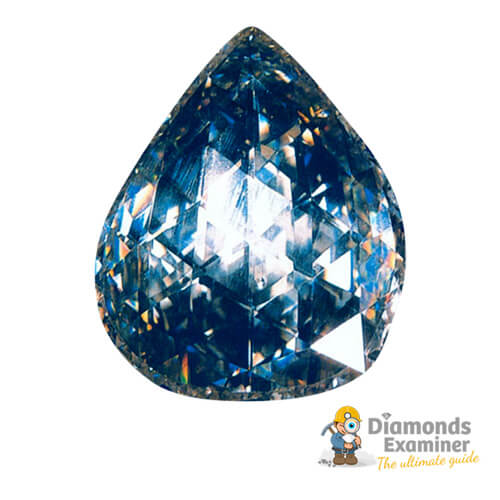
Star of the East diamond
The Star of the East, one of many stars in this firmament, is a pear-cut colourless diamond weighing in at 94.80 carats. Nothing is known about the diamond’s early history, its mine of origin or age, but it is certain that the stone used to be a part of the luscious collection of Sultan Abdul Hamid II of Turkey (ruled 1876–1909).
Click here to tweet the Star of the East diamond and its picture!
How the sultan came to possess the diamond is as uncertain as the gem’s origin, much like where the name comes from, but we do have speculations and educated guesses. The stone comes, in all likelihood, from India (if its physical properties are anything to go by), and the name is probably a reference to the Orient. Today, the diamond is in the capable hands of Harry Winston, Inc. though its exact whereabouts are unknown.
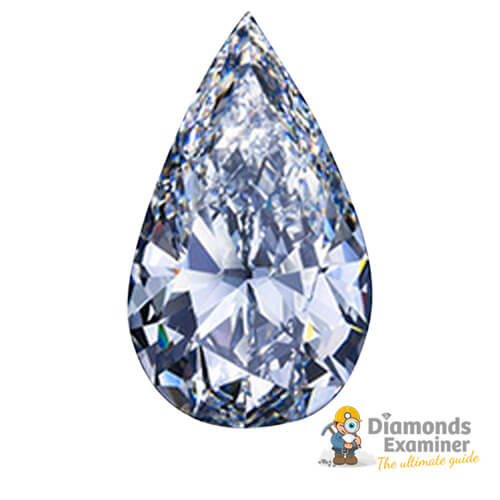
Star of Sierra Leone diamond
The Star of Sierra Leone was an impressively large rough diamond of exquisite chemical purity. The colourless stone weighed in at 968.9 carats, which made it the largest alluvial diamond ever to be found, as well as the fourth largest diamond of gem quality overall. It was found at the Diminco Mine in Sierra Leone (hence the name) in 1972, and was promptly purchased by Harry Winston.
Click here to tweet the Star of Sierra Leone diamond and its picture!
Initially, the rough diamond was cut into a 143.2-carat emerald shape, which was subsequently re-cut into 17 smaller pieces, 13 of which are graded as flawless. The largest piece is a 53.96-carat pear-cut stone that makes the centrepiece of the brooch named after the raw diamond.
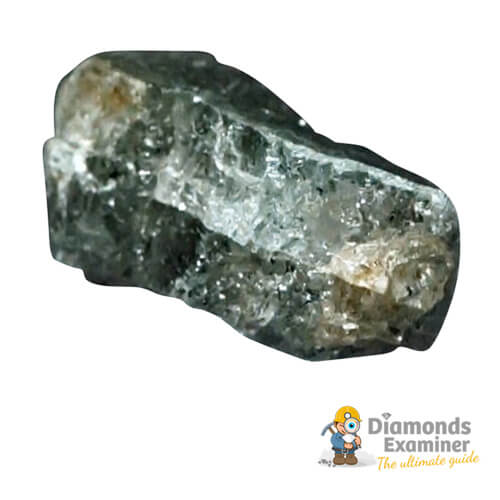
Star of South Africa diamond
The Star of South Africa (not to be confused with Star of Africa, or the Cullinan Diamond), variously known as the Dudley Diamond (after the Earl of Dudley, one of its owners), is a colourless pear-cut diamond weighing in at 47.69 carats. It was discovered by a Griqua boy in 1869 on a field that would later become Kimberley.
Click here to tweet the Star of South Africa diamond and its picture!
The rough stone weighed 83.5 carats upon discovery, and the young boy (shepherd by occupation) managed to sell it for a substantial price (the story mentions some 500 sheep, ten oxen and one horse) to a nearby farmer, who was known for already having bought a diamond three years prior. After changing hands several times over the period of over a hundred years, the diamond was auctioned off in Geneva in 1974, and the last anyone’s seen it was 2006 at the Natural History Muesum in London.
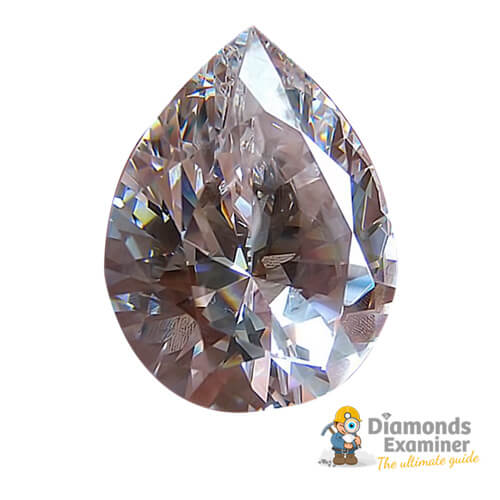
Star of the Season diamond
The Star of the Season is a colourless pear-cut diamond weighing in at an auspicious 100.10 carats. It was named by an eminent Saudi jeweller – Sheikh Ahmed Fitaihi, though he never disclosed the reasoning behind it. The sheikh purchased the stone in 1995 for what was then a record sum ($16.5 million).
Click here to tweet the Star of the Season diamond and its picture!
And, yet, many would call it a bargain. The internally flawless, D-colour stone is of unknown provenance in the way of the exact mine and location. year of discovery or circumstances in which it was found. However, if its characteristics are anything to go by, the stone was mined in South Africa.
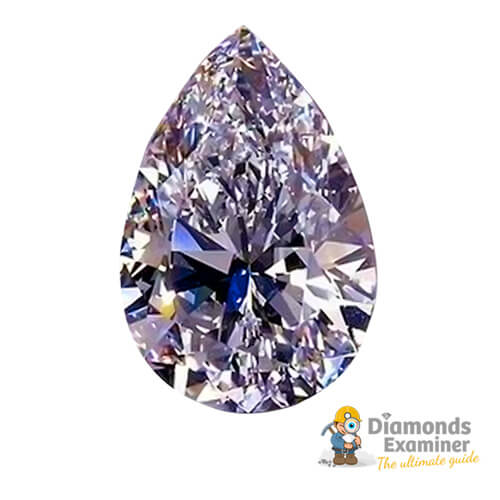
Star of the South diamond
The Star of the South, or Estrela do Sul, as it is known in Portuguese (literally the same meaning), is a Brazilian diamond weighing in at 128.48 carats. It’s not a pure colourless stone, as it has a slight brown-pinkish tinge. Before being cut into its present cushion shape, the Star of the South weighed some 254.5 carats, and it was a naturally-formed rhombic crystal sporting 24 facets, as well as a depression that might have accommodated another crystal.
Click here to tweet the Star of the South diamond and its picture!
The rough stone was discovered in Minas Gerais in 1853, by a slave woman, no less, and it is the first diamond from Brazil to receive acclaim on an international level. The slave did receive her freedom as reward, as well as a lifelong pension from her former master. These days, the diamond is disputed between the Gaekwad family and Cartier, the latter of whom is in possession of it currently.
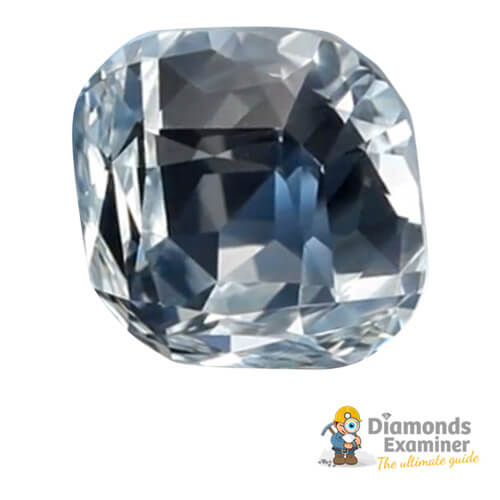
Strawn-Wagner diamond
The story of the Strawn-Wagner diamond is one of ordinary people blessed with good luck. The stone is one of dozens found in the Crater of Diamond State Park (AR), and one of the few colourless and internally flawless diamonds found there since the park became accessible to the public.
Click here to tweet the Strawn-Wagner diamond and its picture!
As for the stone itself, it weighed in 3.09 carats before being cut to its present 1.09-carat round brilliant shape. The rough stone was discovered by Shirley Strawn of Arkansas, and was in her possession (as per the park’s finders-keepers policy) until purchased by the State of Arkansas. Ms Strawn’s surname accounts for the first part of the diamond’s name, while the latter part is her honouring Lee Wagner, her great-great-grandfather.
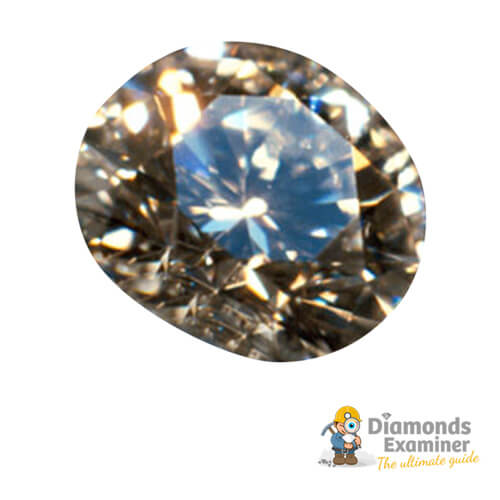
Stuart or Holland diamond
The Holland Diamond, also variously known as the Stuart Diamond (for Mary II of England, the diamond’s first documented owner), is a rose-cut diamond of the purest water (colourless), weighing in at 39.75 carats. Interestingly enough, it is said that the merchant who sold the rough stone to Mary advised cutting it into two pieces.
Click here to tweet the Stuart or Holland diamond and its picture!
Luckily for the generations to come, the queen decided to not heed the advice, and had the raw stone cut into its present pear shape. After the queen’s death, the diamond passed to her husband and the House of Orange. It is believed that the diamond is in hands of the Dutch Royal family, though such claims are unverified, as of yet.
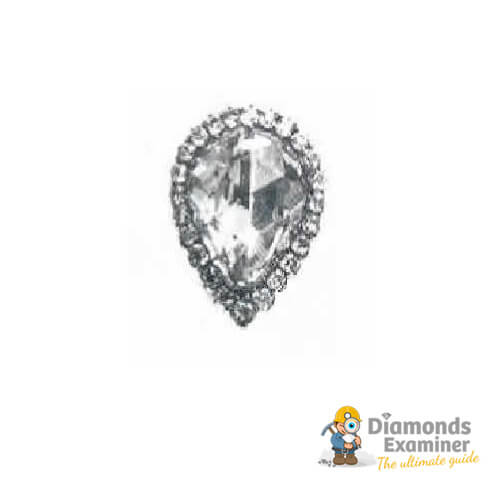
Sweet Josephine diamond
The Sweet Josephine is a large fancy vivid pink diamond of a fairly standard cushion cut. Weighing in at 16.08 carats, it is the largest of its kind. The Sweet Josephine is noted for being one of the two diamonds that Joseph Lau, a Hong Kong billionaire, purchased for his daughter and named in her honour (the other being the Blue Moon of Josephine).
Click here to tweet the Sweet Josephine diamond and its picture!
Interestingly enough, both diamonds proved to be record-breakers in their respective classes, as they were the most expensive pink and blue diamond, respectively, to be auctioned off. It is not known where the stone was sourced from, though its current mount (size 6 platinum and gold ring) and whereabouts (Hong Kong) are all too well known.
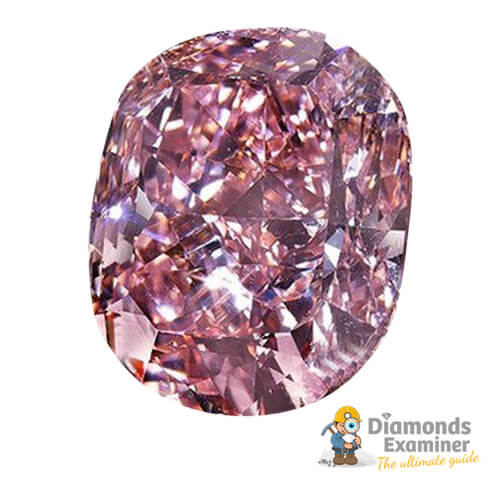
Taylor-Burton diamond
The Taylor-Burton Diamond is a 68-carat pear-cut colourless diamond. The rough stone was unearthed in South Africa, at the Premier Diamond Mine, to be exact, sometime during the year 1966. It weighed in at 241 carats, and was cut by none other than Harry Winston. The diamond takes its name from the famous acting couple, Elizabeth Taylor and Richard Burton.
Click here to tweet the Taylor-Burton diamond and its picture!
Burton had intended to purchase the diamond for Taylor as a present, and bid for it in 1969 via telephone. Burton, Onassis and even Harry Winston came out as under-bidders, and the diamond went to Cartier, who named it the Cartier Diamond (as it had been unnamed prior). Burton, however, would not give up, so he arranged with Cartier to have it purchased off them, for a fair price. After changing hands a couple of more times, the stone sits pretty today in a Cartier necklace, in possession of Mouawad jewellers.
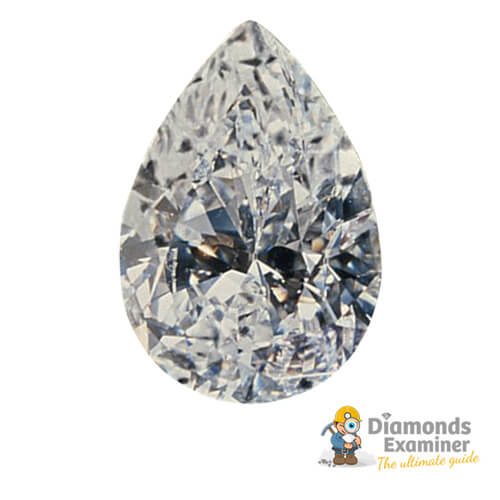
Tereshchenko diamond
The Tereshchenko Diamond, also variously known as the Tereshchenko Blue, is a fancy blue pear-cut diamond weighing in at 42.92 carats, which makes it one of the largest blue diamonds in the world. The rough stone weighed about 150 carats upon discovery at the famed Golconda mines in Andhra Pradesh, much like the more famous Hope Diamond.
Click here to tweet the Tereshchenko diamond and its picture!
It has been posited that the pair may have been the eyes of an idol in a Hindu temple, but such claims are far from substantiated. The stone takes its name from its first owner, Mikhail Tereshchenko, a sugar magnate during the Imperial Russia, and is known for once being mounted as the centrepiece in a superb Cartier necklace consisting of 47 diamonds of various cuts, colours and carats.
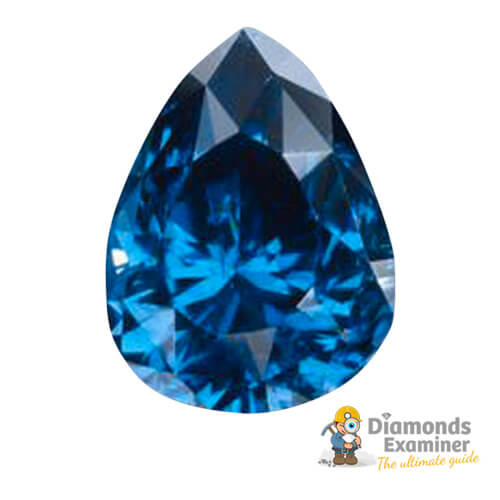
Tiffany Yellow diamond
The Tiffany Yellow Diamond is a yellow diamond of impressive size that was unearthed at the Kimberley Mine in South Africa in 1877. Upon discovery, the rough stone weighed in at 287.42 carats, before being cut to its current antique cushion form weighing 128.54 carats. The diamond is named after its first owner, Charles Tiffany, a New York jewel merchant and founder of the Tiffany & Co).
Click here to tweet the Tiffany Yellow diamond and its picture!
The stone is probably best known to the general public for being worn by the incomparable Audrey Hepburn for the publicity shoot for Breakfast at Tiffany’s in 1961. Today, the Tiffany Yellow sits pretty as a centrepiece of a platinum necklace, accompanied by twenty Lucida and another fifty-eight brilliant-cut stones.
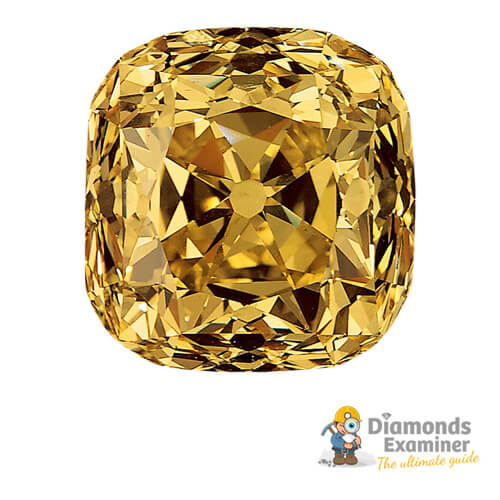
The Symbolic Yellow diamond
The Symbolic Yellow Diamond is a fancy vivid yellow gemstone of antique cushion cut. Weighing in at 114.63 carats, the Symbolic Yellow is one of the largest diamonds of that colouration, and one of the very few yellow stones that weigh in excess of 100 carats, such as the 128.54-carat Tiffany Yellow, 110.3-carat Cora Sun Drop and the 100.09-carat Graff Yellow.
Click here to tweet the The Symbolic Yellow diamond and its picture!
The rough stone was sourced, in all likelihood, from the illustrious Premier Mine in South Africa (although the exact year is not confirmed). It was unveiled at the Masterpiece London Fair in 2015 by Symbolic & Chase (hence the first part of the name).
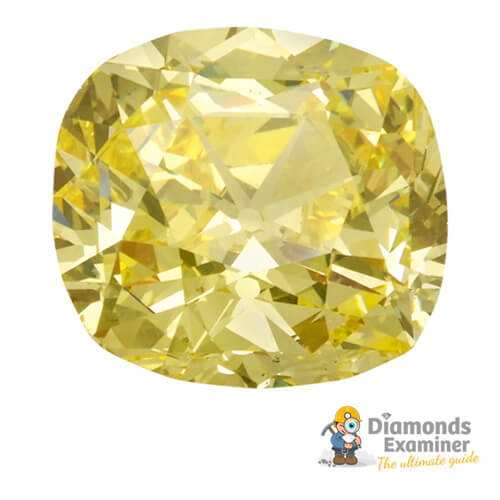
Uncle Sam diamond
The Uncle Sam diamond is a twice cut emerald-shape faint yellow stone weighing in at 12.42 of exceptional clarity. Contrary to what one might expect, the diamond was not named after the famous personification of the US government, but rather after the nickname of its discoverer, one Wesley Oley Basham.
Click here to tweet the Uncle Sam diamond and its picture!
Weighing in at 40.23 carats, the rough diamond was the largest one ever found in the United States. It was unearthed in 1924 at the Prairie Creek site in Murfeesboro (AR), which was later to become the famous Crater of Diamonds State Park. The exact location is clearly designated for all the visitors to see. The diamond itself currently resides in private hands.
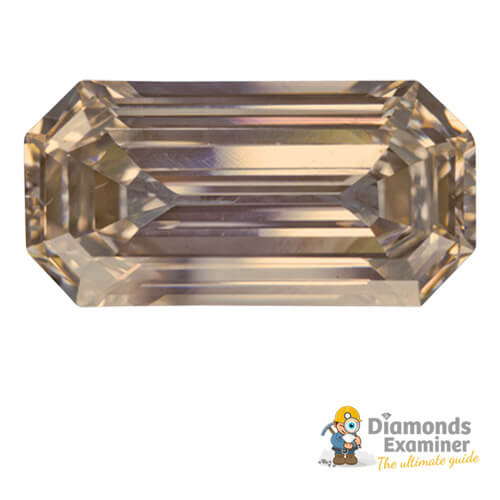
Vargas diamond
The Vargas Diamond was a massive 726.6-carat rough diamond discovered in Brazil in 1938. At the time, it was the largest alluvial diamond to be discovered not only in Brazil, but the world, as well as the fourth largest gem-quality stone. The name comes from the name of the then president of Brazil, Getúlio Dornelles Vargas.
Click here to tweet the Vargas diamond and its picture!
It was subsequently cut into as many as 29 smaller pieces (totalling 411.06 carats), the largest of which being the 48.26-carat emerald-cut President Vargas (re-cut and polished to 44.17 in 1958). Of the rest 28 diamonds, 18 are of considerable size, while the remaining 10 are smaller pieces.
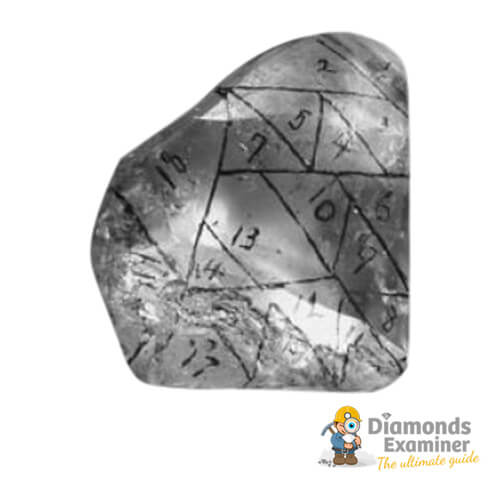
Williamson pink diamond
The Williamson Pink is a large pink diamond, internally flawless and weighing in at 54.5 carats. The raw diamond was unearthed in Tanzania, at the Williamson diamond mine, to be precise (hence the name) in 1947. It was gifted as a wedding present to (then) Princes Elisabeth, later Queen Elisabeth II and Prince Phillip, Duke of Edinburgh.
Click here to tweet the Williamson pink diamond and its picture!
The young couple then commissioned Briefel & Lemer of London to cut the diamond and Cartier’s Frederick Mew to design the mount. Both parties over-delivered, and to this date the queen keeps in her possession a beautifully-crafted floral brooch, with the Williamson Pink as the centre part, a number of white diamond forming the petals and leaves, as well as baguette-cut white diamonds along the stalk.
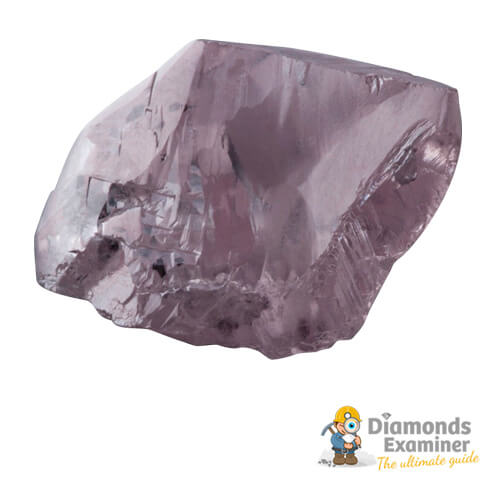
Wittelsbach-Graff diamond
The Wittelsbach-Graff Diamond, also variously known as just Wittelsbach diamond, is a fancy deep blue stone of antique cut. The stellar brilliant cut does justice to its hue and brilliance. The rough stone was unearthed in the famed Golconda Mines of Andhra Pradesh during an unknown period. An apocryphal story relates how the stone appears in Europe as a part of the dowry King Phillip IV of Spain prepared for his daughter, the Infanta Margaret Theresa.
Click here to tweet the Wittelsbach-Graff diamond and its picture!
After many marriages and moves, the stone comes into possession of the House of Wittelsbach in 1772 (hence the name). At this point, the cut stone weighs in at 35.56 carats, but some two centuries later (2008), its then owner Laurence Graff has it cut to its present 31.06 carats to remove any remaining internal flaws (this is where the name was slightly changed from Wittelsbach to Wittelsbach-Graff).
